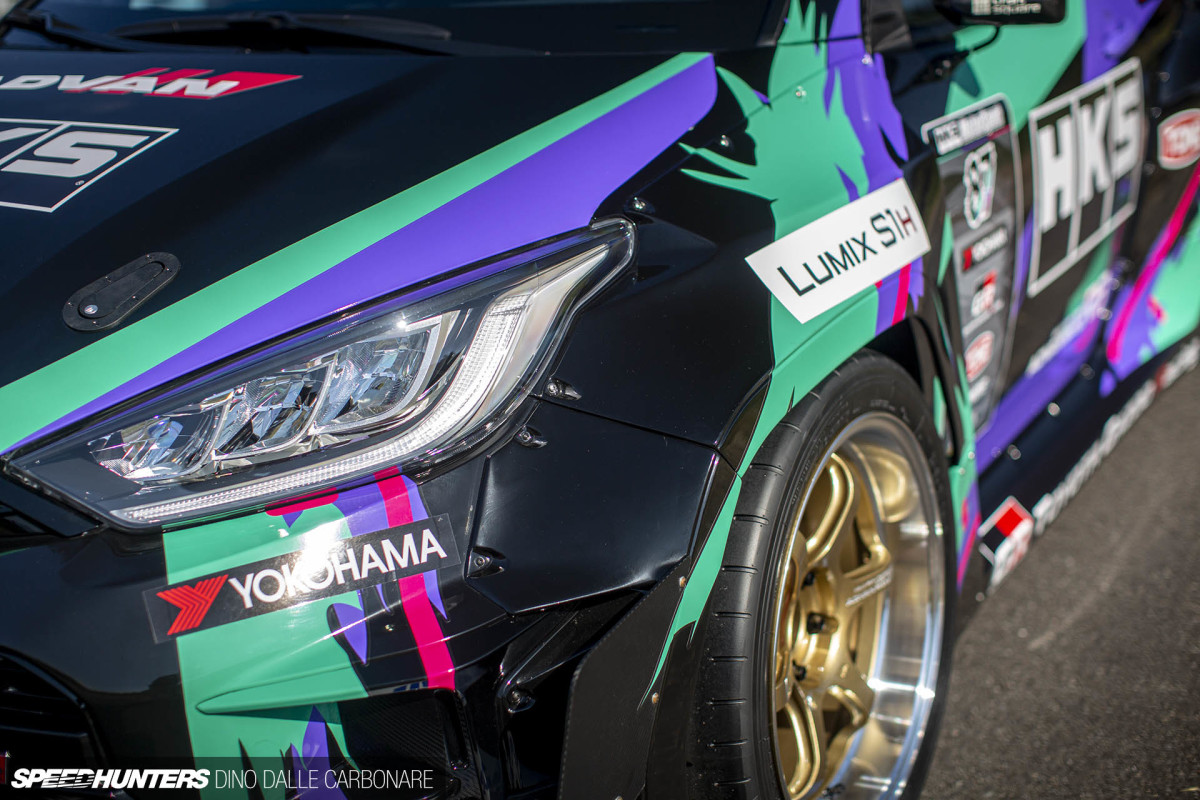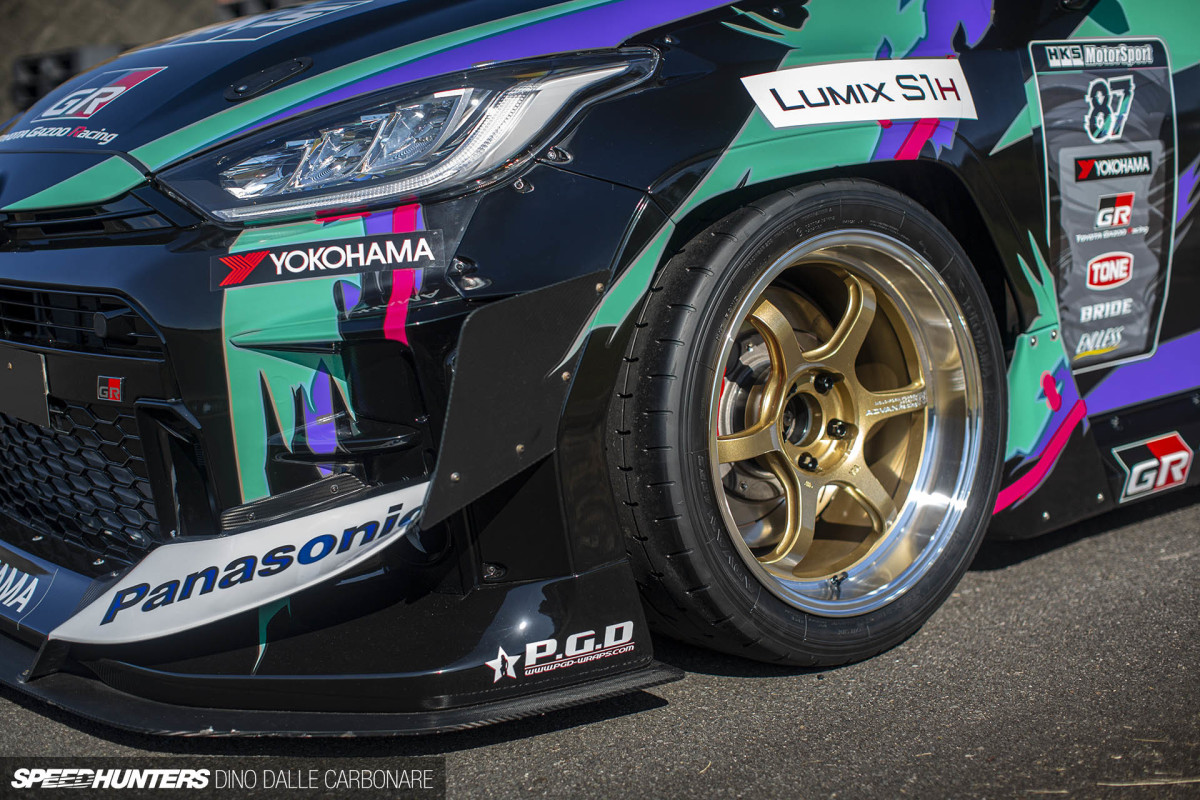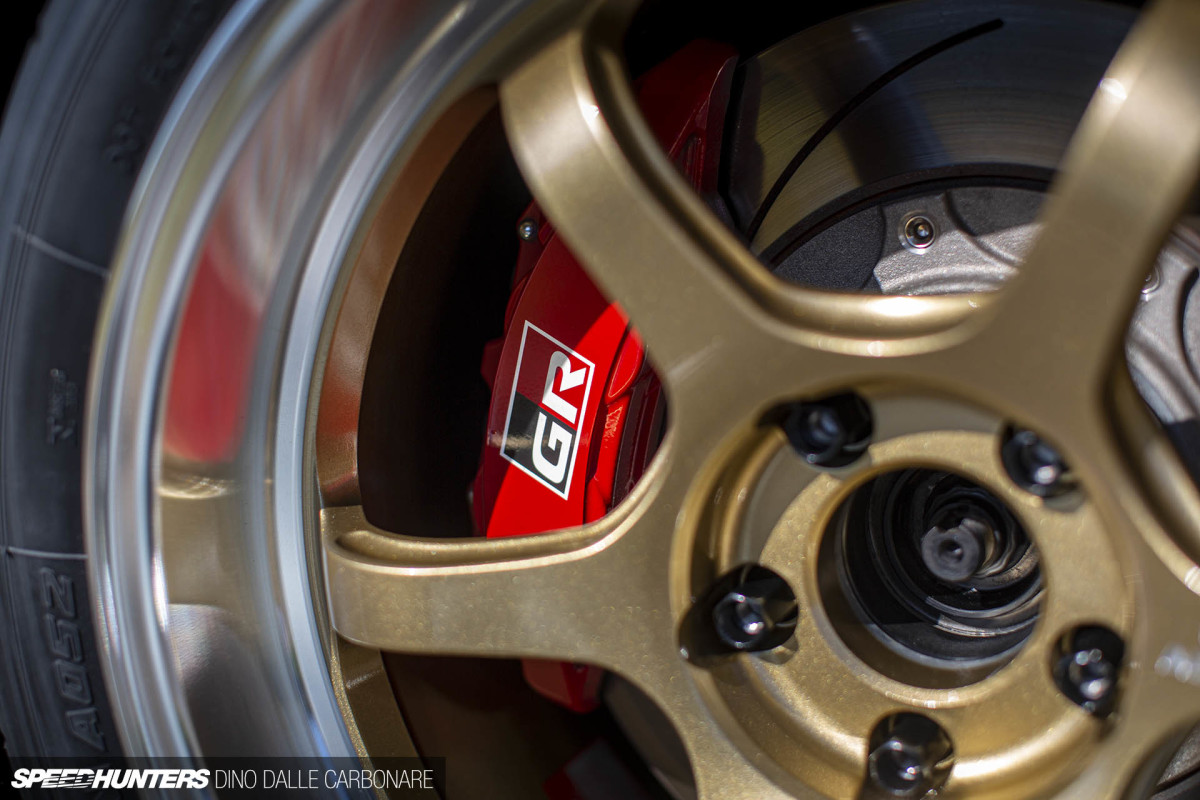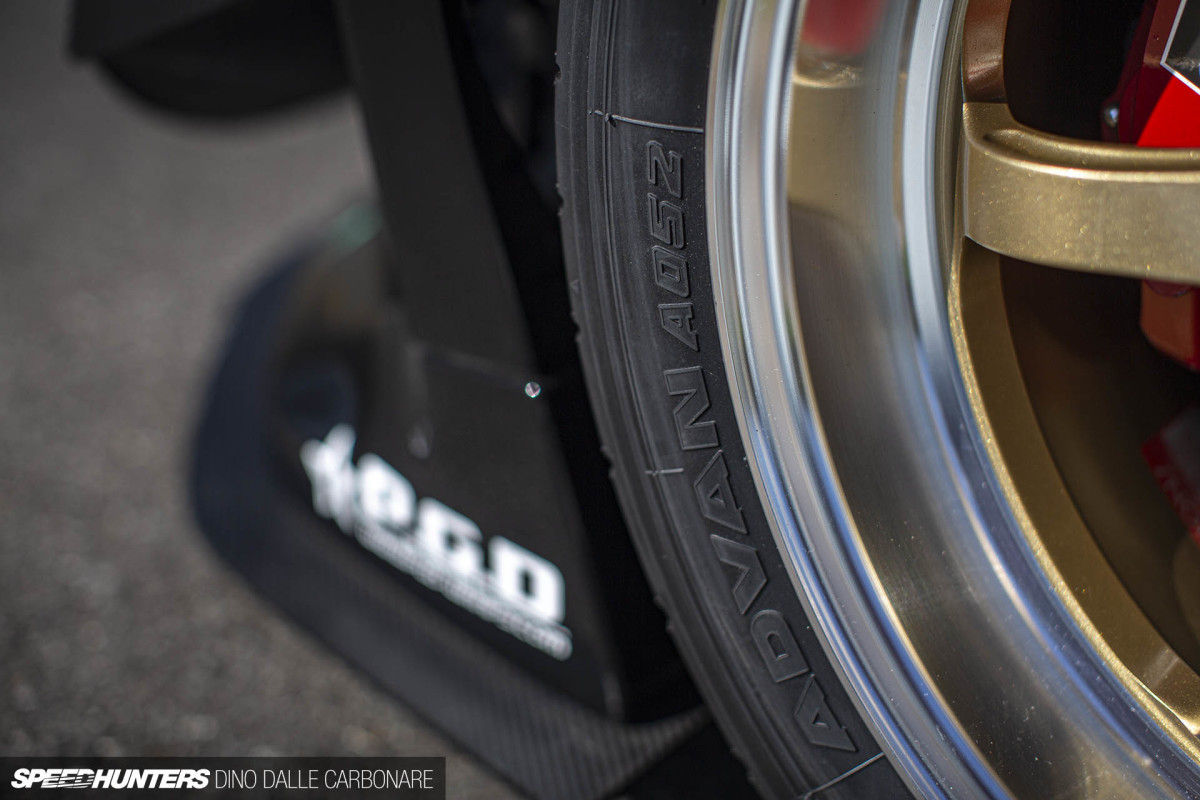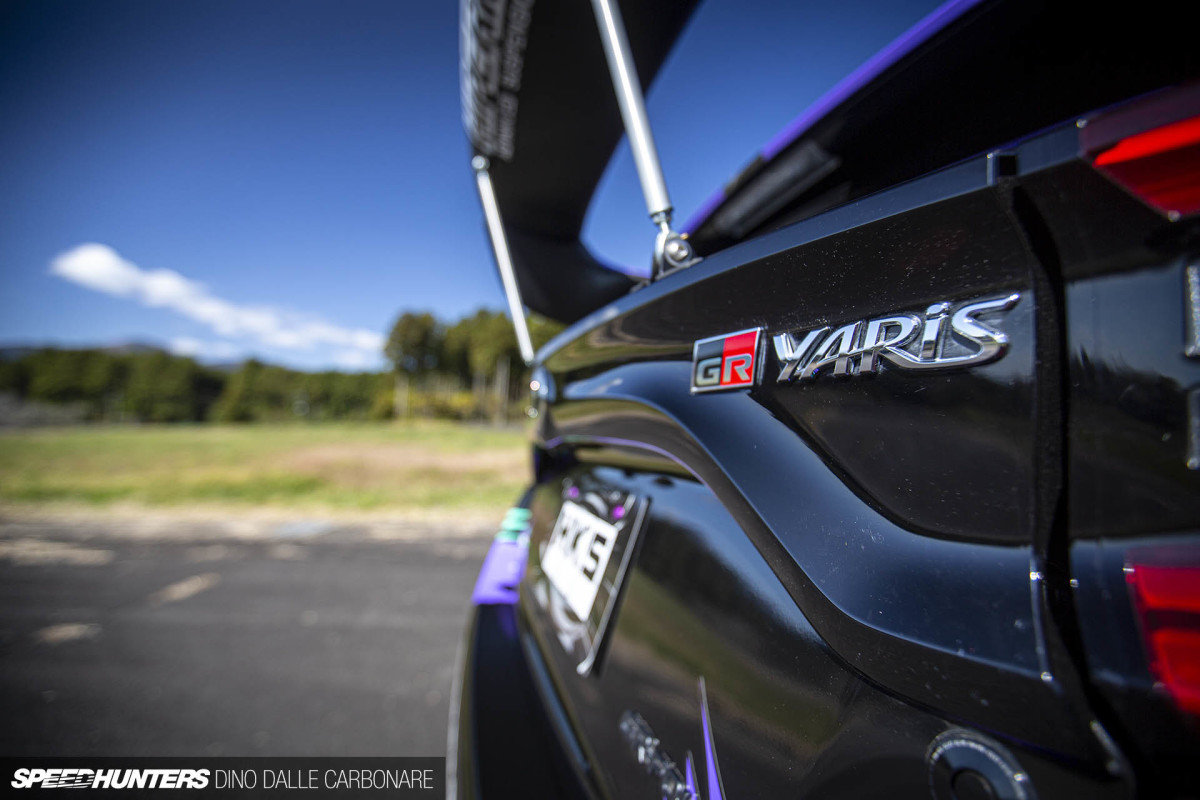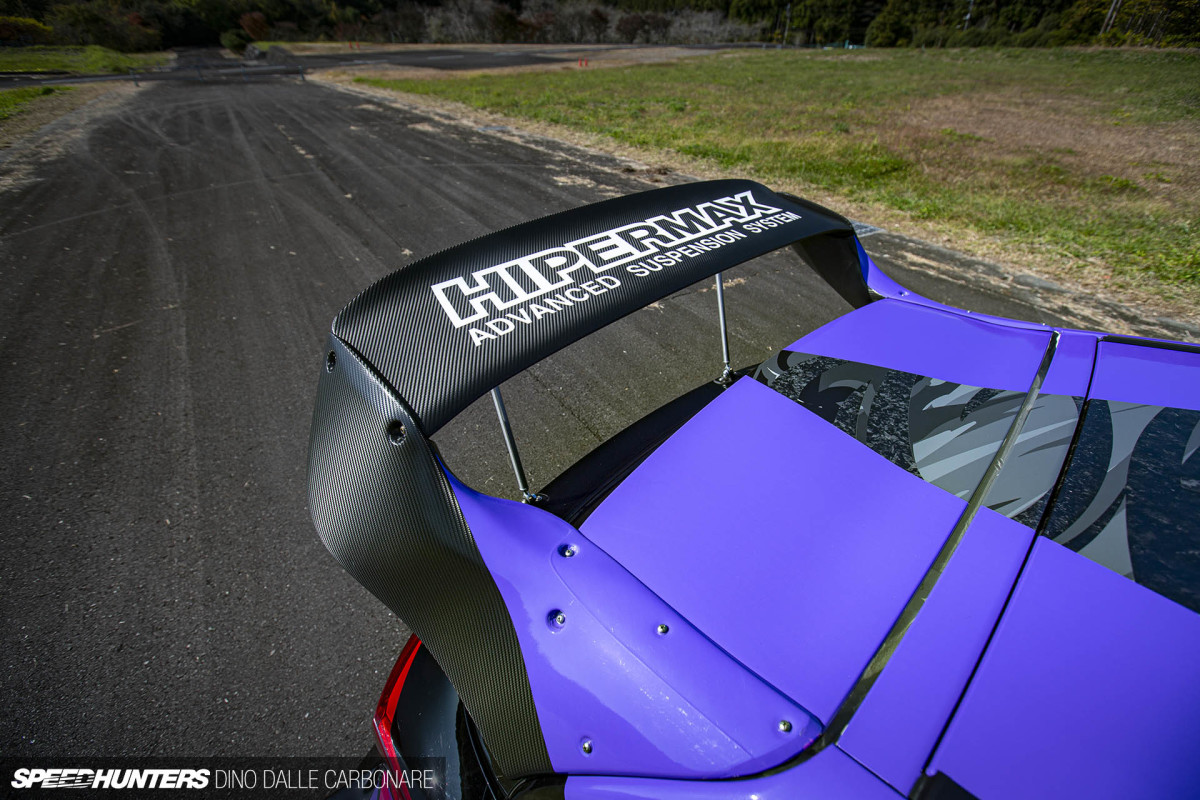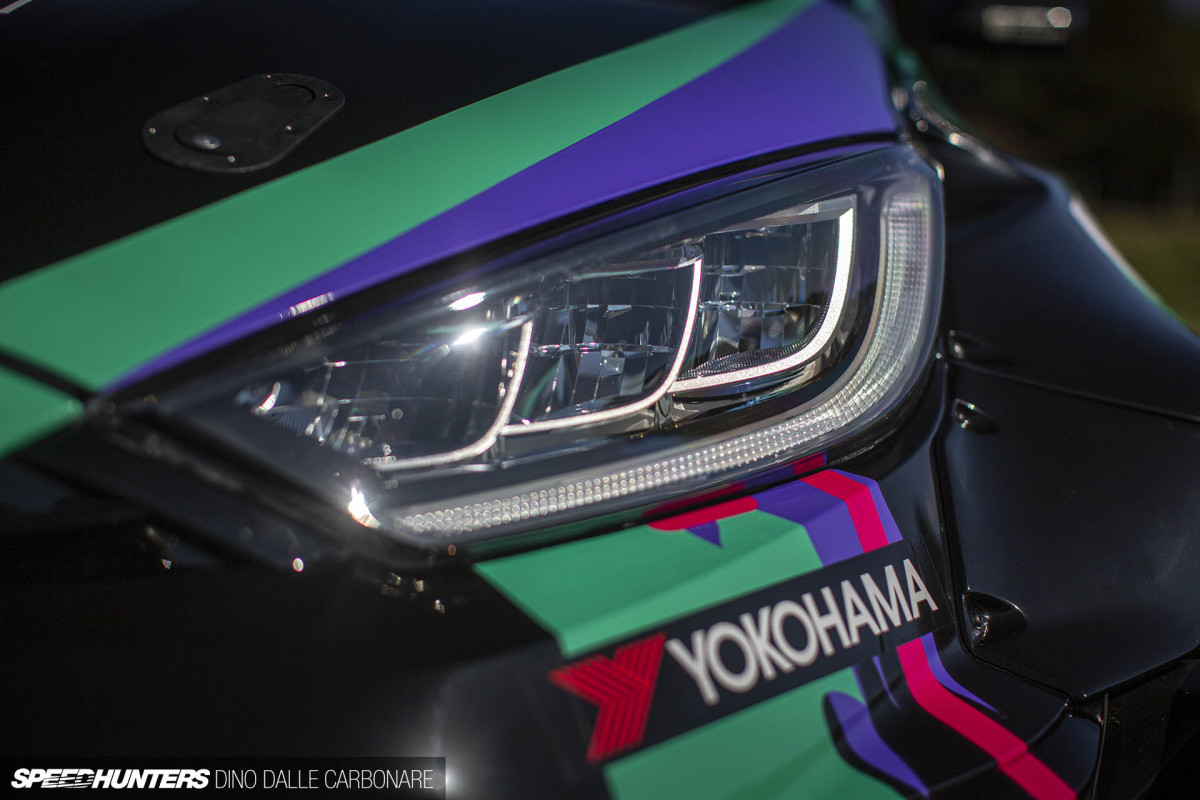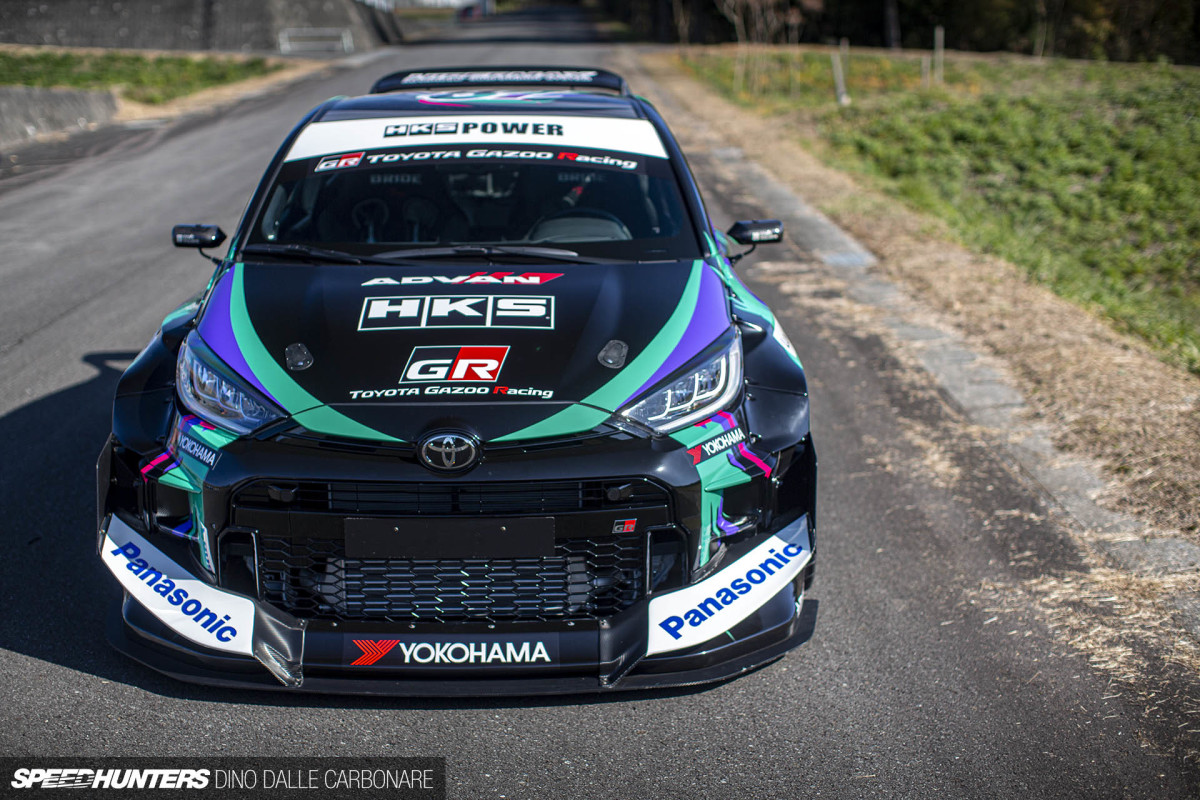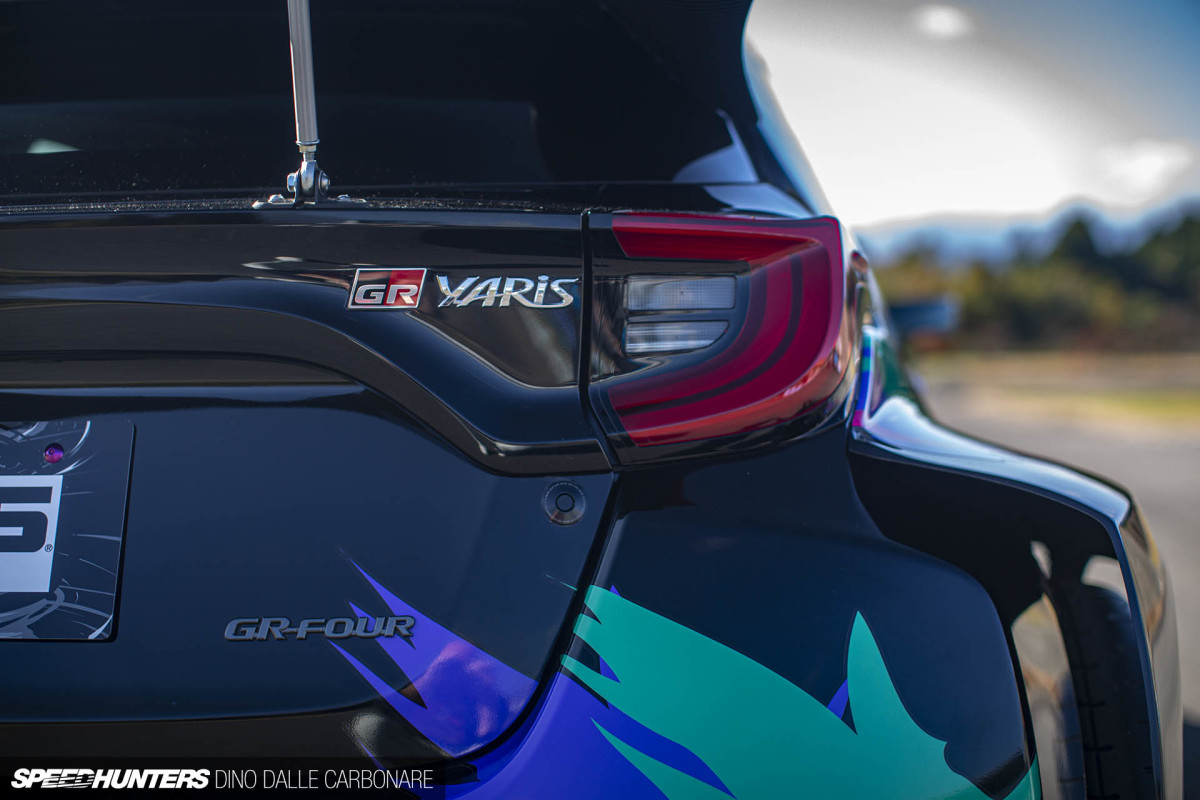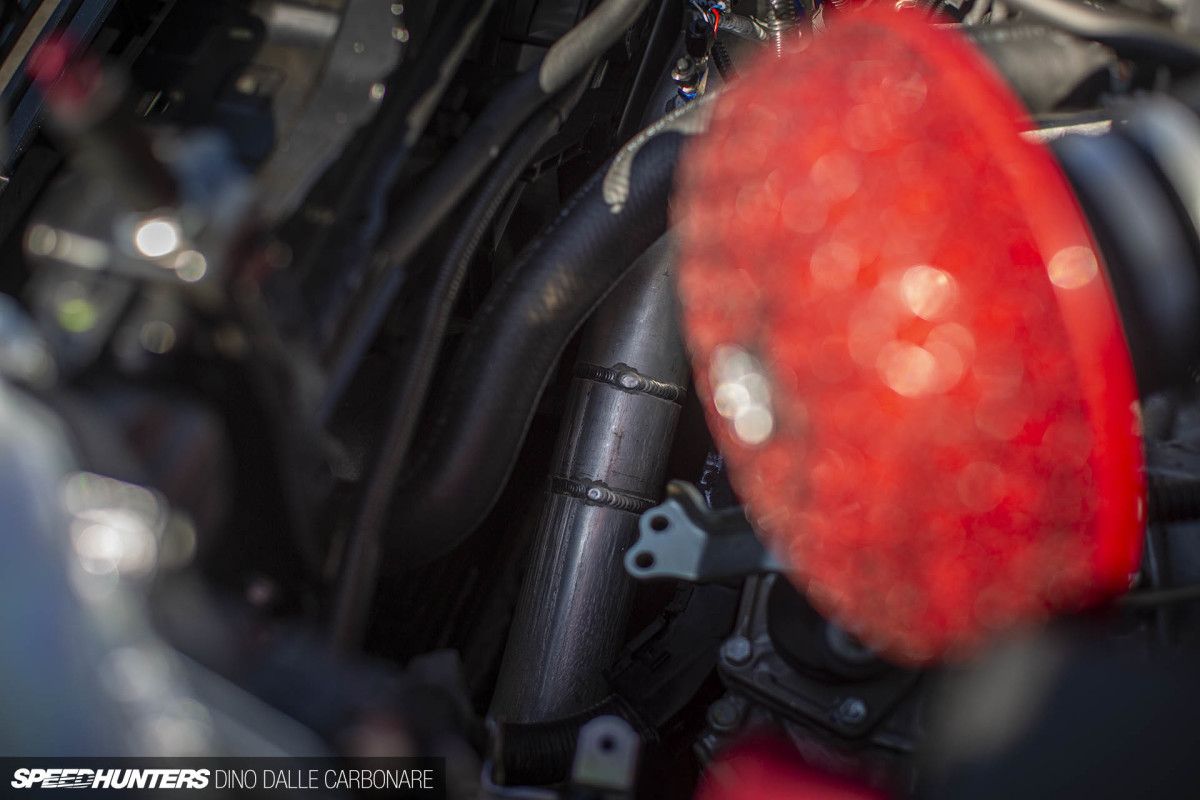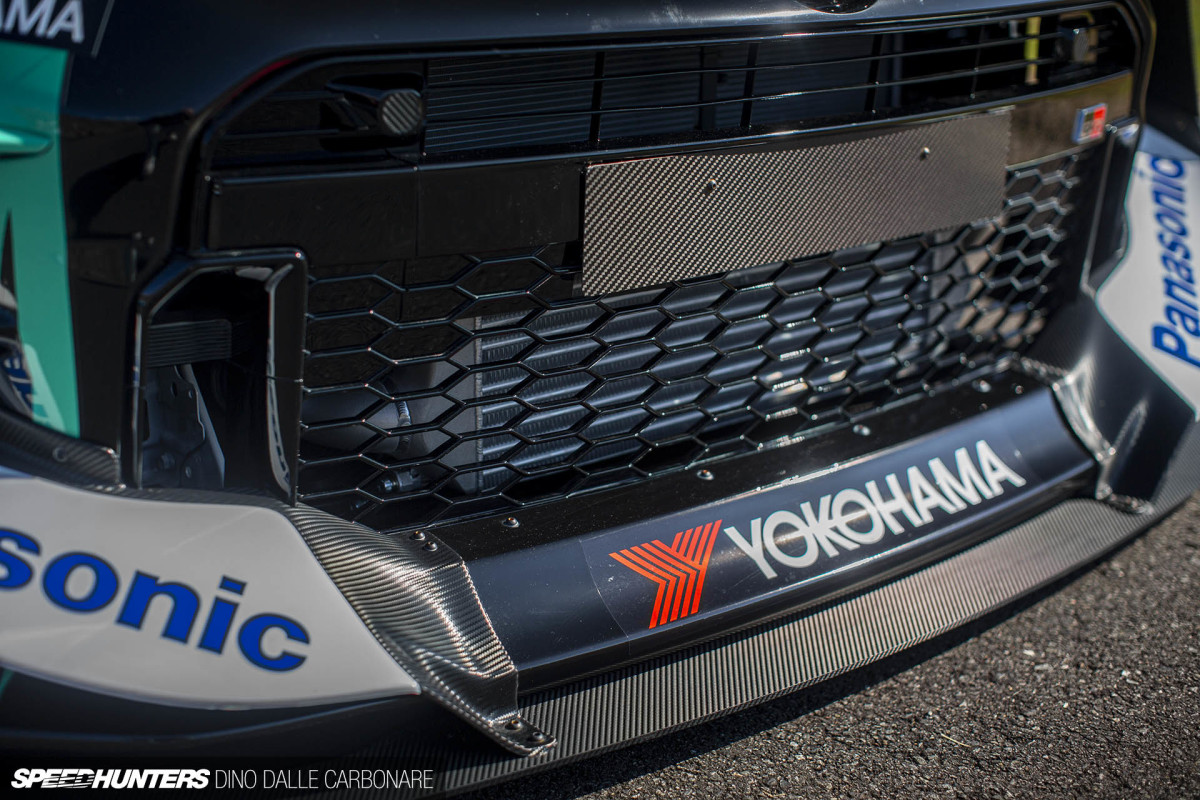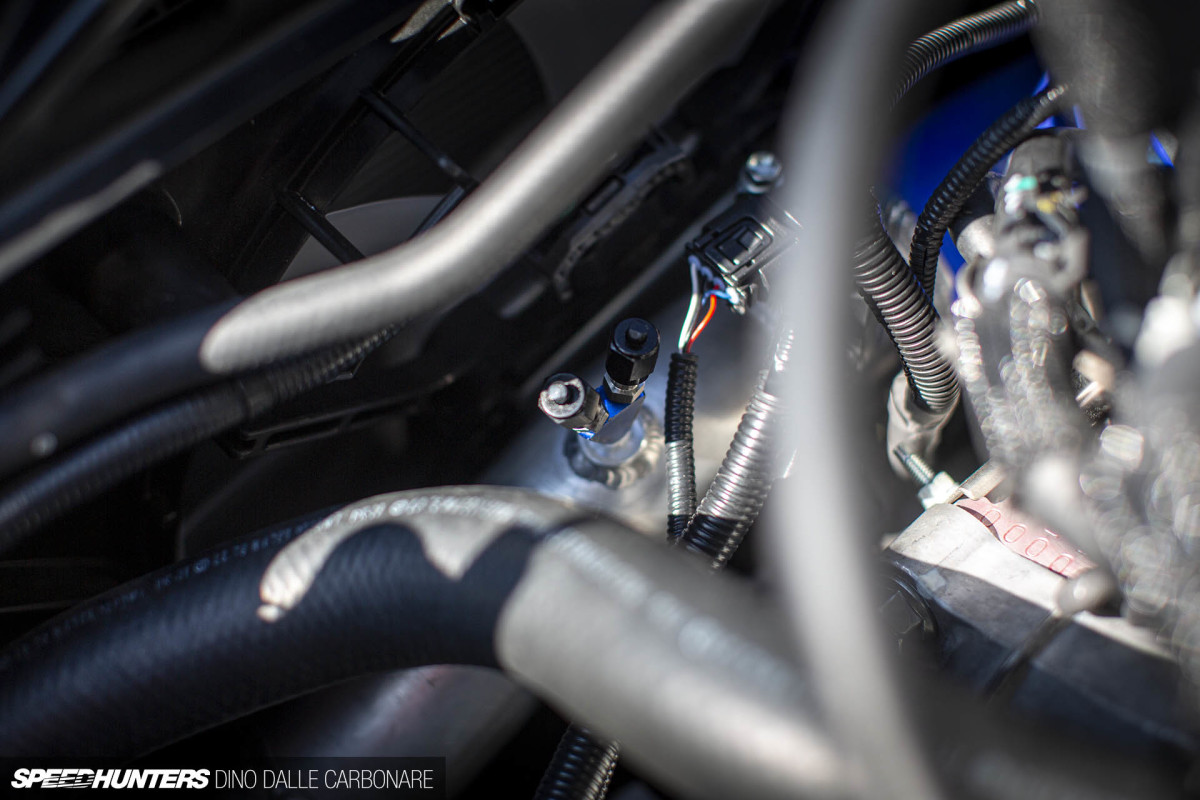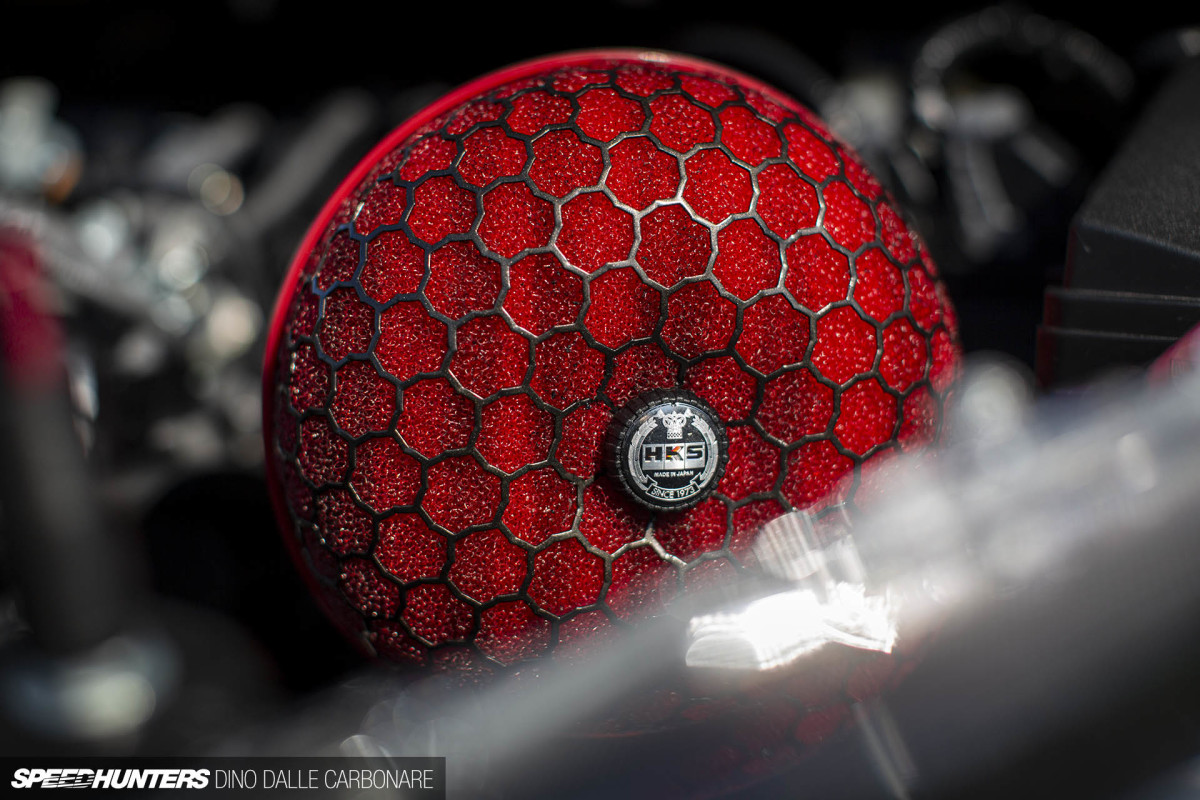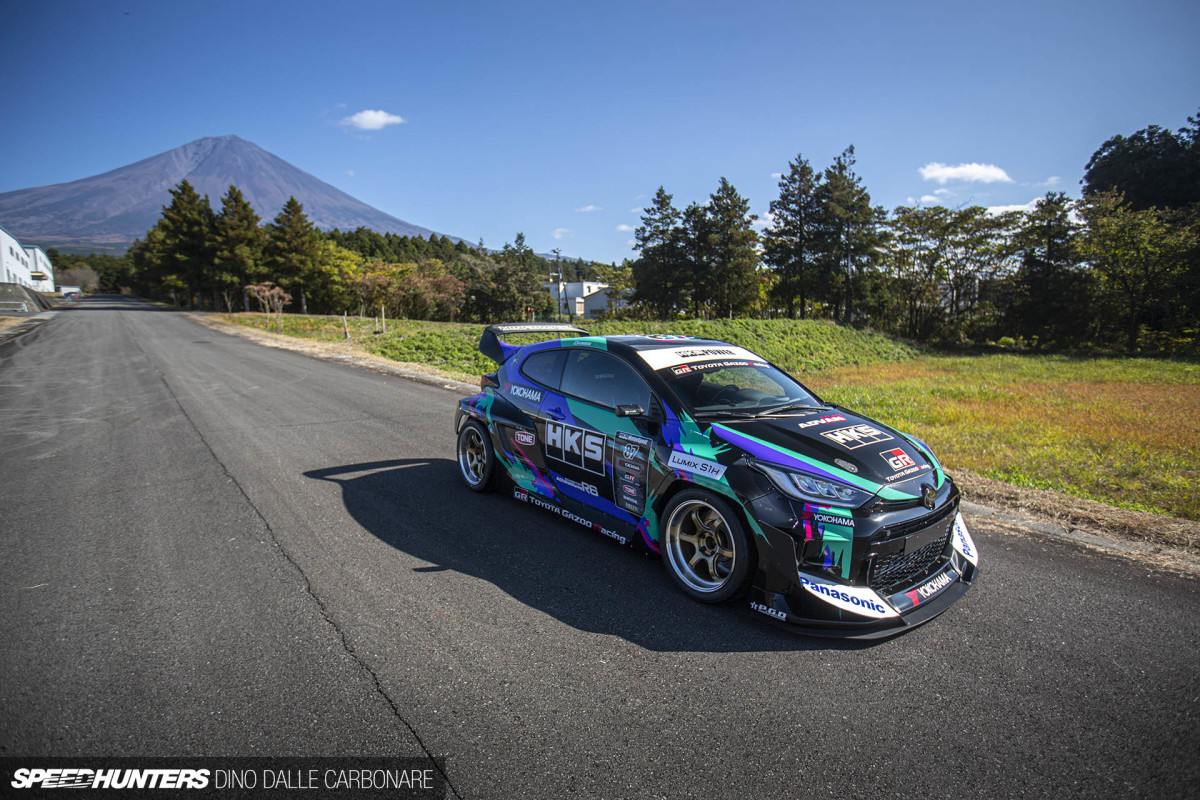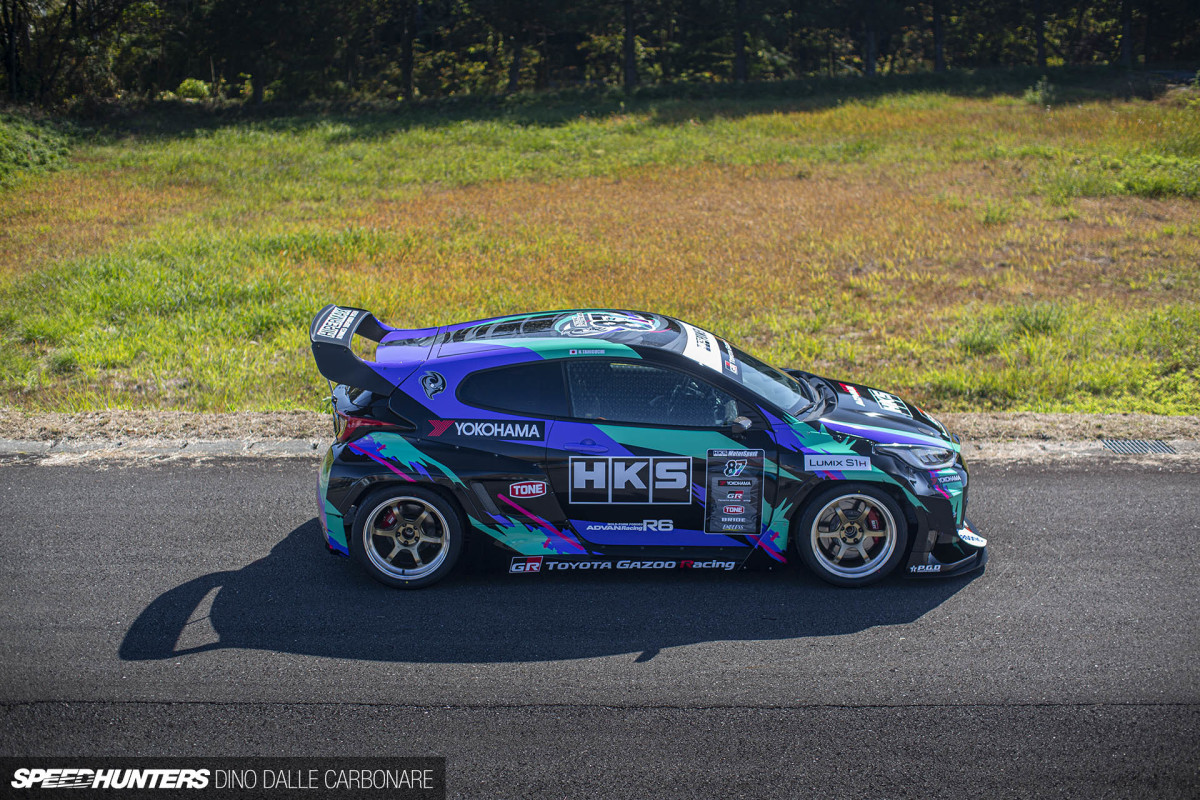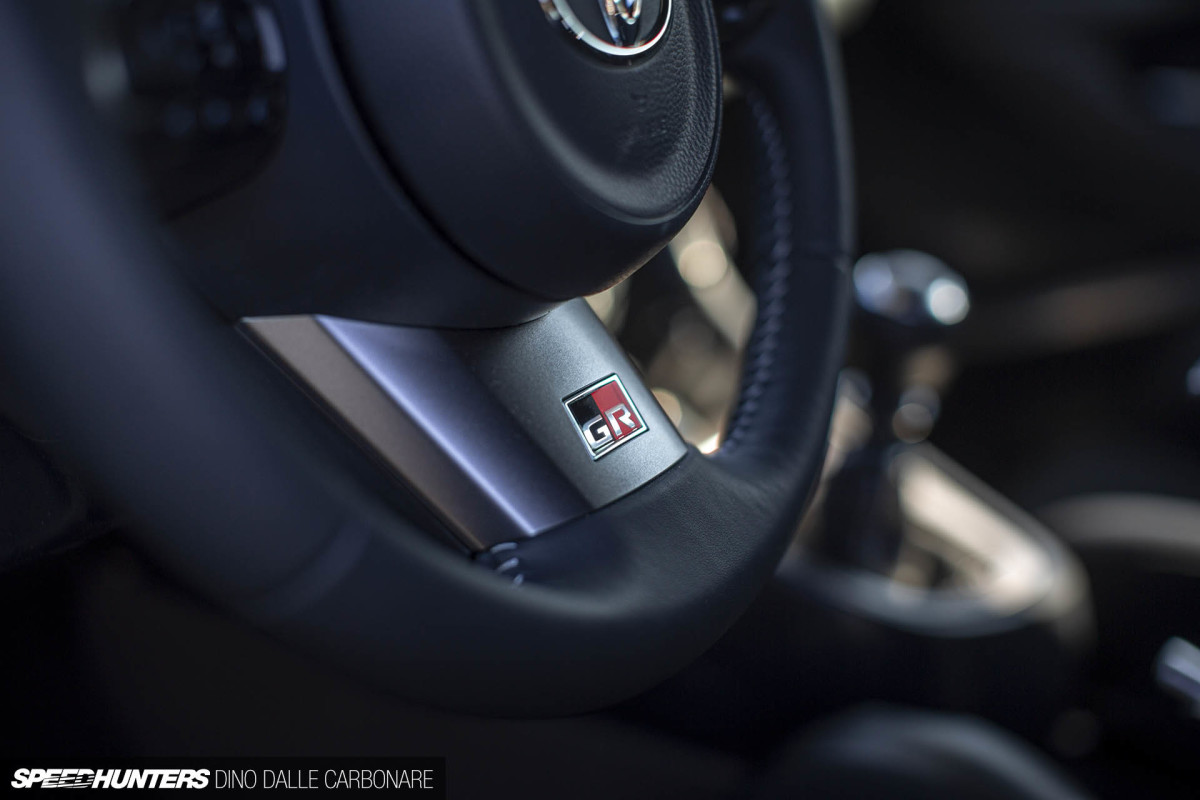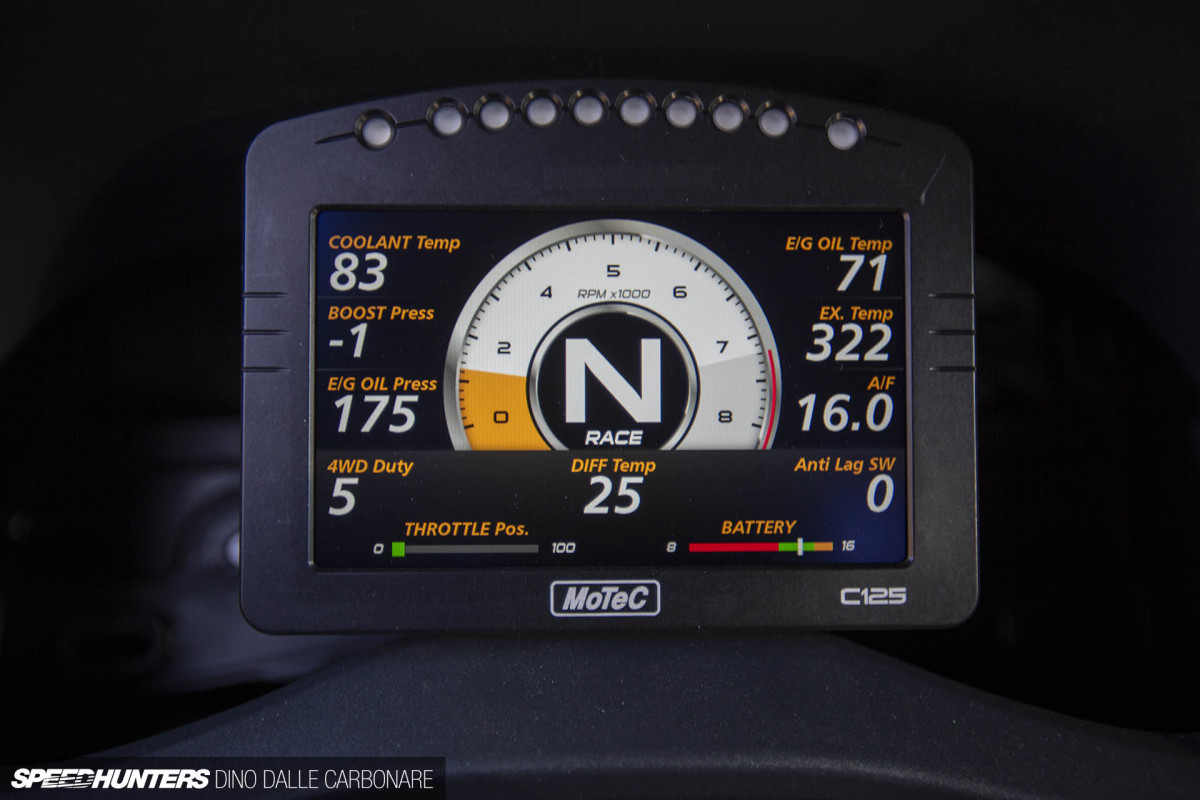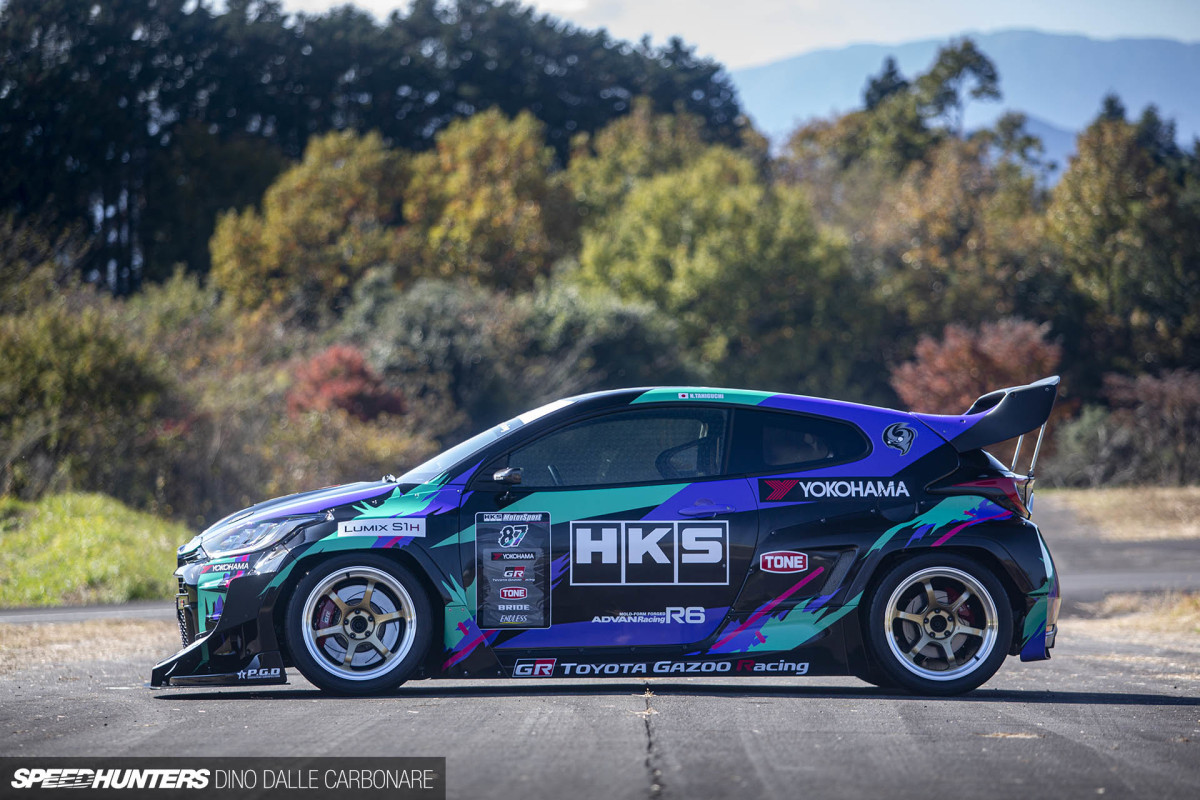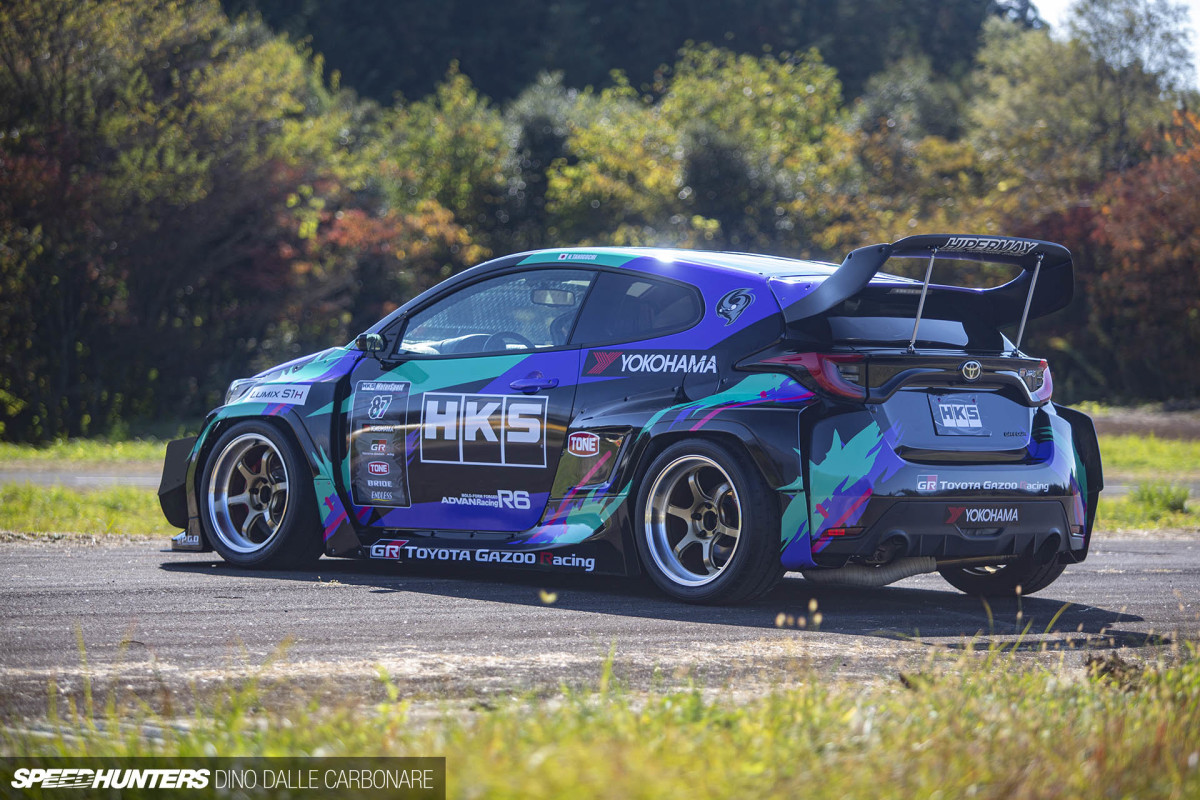- BY
8TH DECEMBER 2020
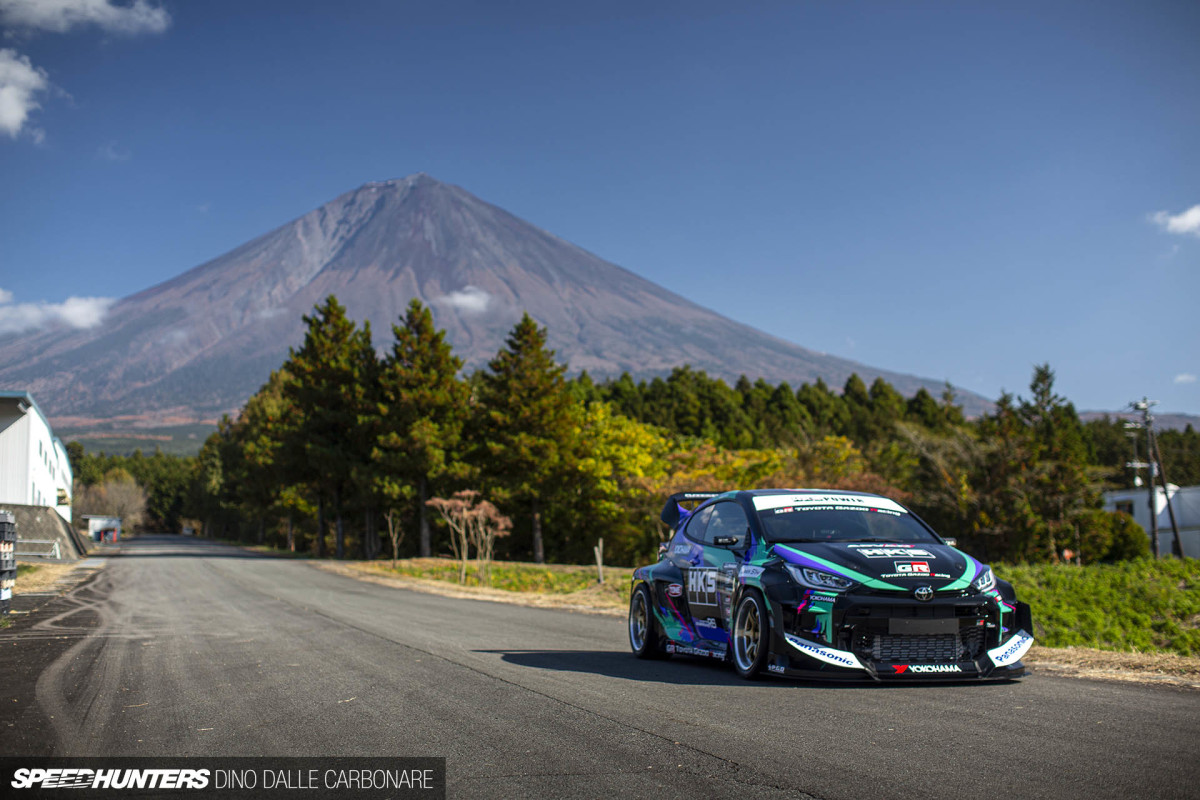
If you caught my drive feature on the new Gazoo Racing (GR) Yaris, you might be wondering if its 1.6L 3-cylinder turbo G16E engine and the 270hp it generates can be pushed further? And if so, how much is safe?
Well, HKS is well on their way to answering that question, and on my recent trip down to the Japanese tuning company’s HQ at the base of Mt. Fuji, they also pulled out a GR Yaris that they’ve been playing around with for a few months.
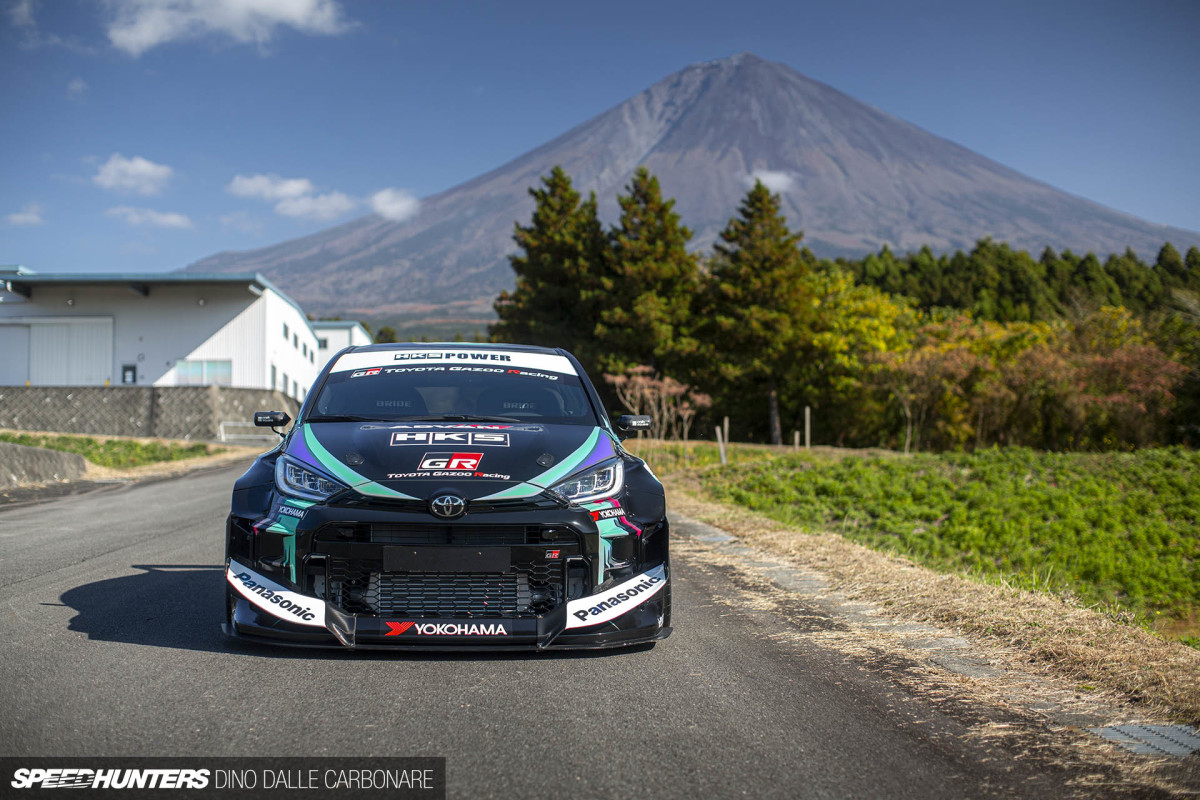
A while back, Gazoo Racing supplied HKS with a couple of pre-production cars so they could get a head start in their GR Yaris aftermarket tuning parts design and production program. As you may have seen on social media, Daigo Saito got his hands on a GR Yaris too, and that car – and the one we’re going to look at today – have both been on the receiving end of a Pandem wide-body aero kit that Miura-san managed to produce in lightning-fast speed.
While Daigo has gone with a 2JZ swap in his Yaris, HKS have focused their attention on extracting more power from the factory G16E engine that powers this Gazoo Racing special.
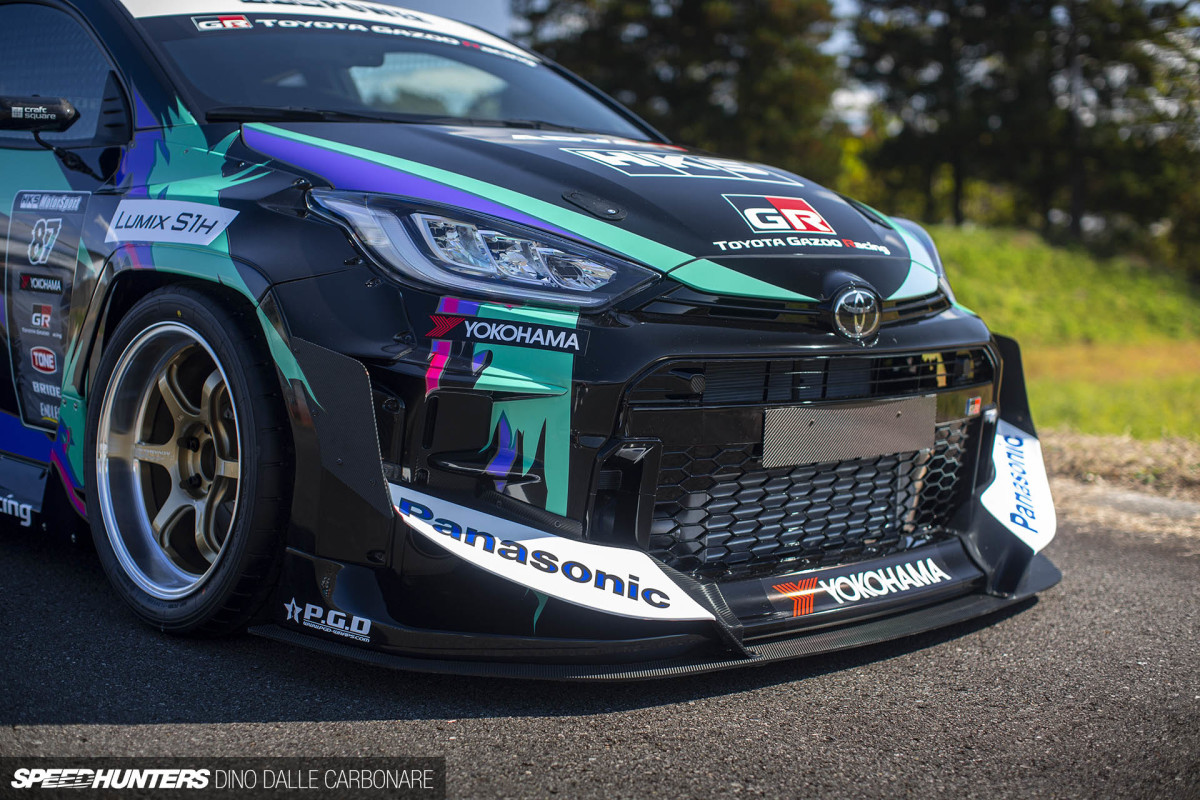
What you’re seeing here is what HKS calls their ‘Step 1′ setup, a functional and well-performing drift and race car that’s destined for exhibition use. HKS driver Nobuteru ‘Nob’ Taniguchi has already put the Yaris through its paces at a series of closed test sessions, where HKS engineers set up the suspension and fine tuned the engine settings and the experimental bits and pieces they’ve developed for the model.
The moment I finished shooting the Yaris at HKS’s facility, it was taken back to the workshop where the engine was pulled for the start of ‘Step 2′, which involves tearing the motor down to inspect the internals and looking at possible improvements.
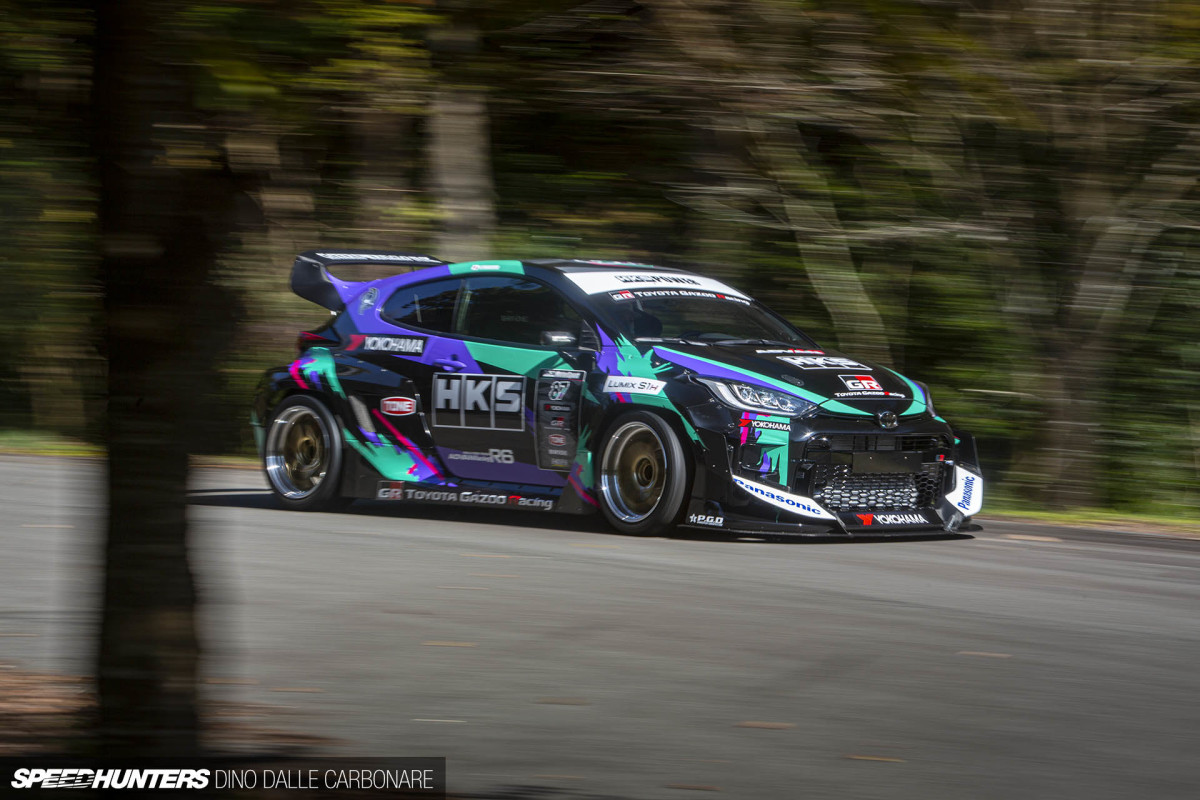
We’ve previously taken a digital look at the overfender kit that Miura created for the car, but seeing it in person is something else. The proportions are spot on, and it really does look like a fully-fledged WRC or World RX car, but with some JDM spice to it.
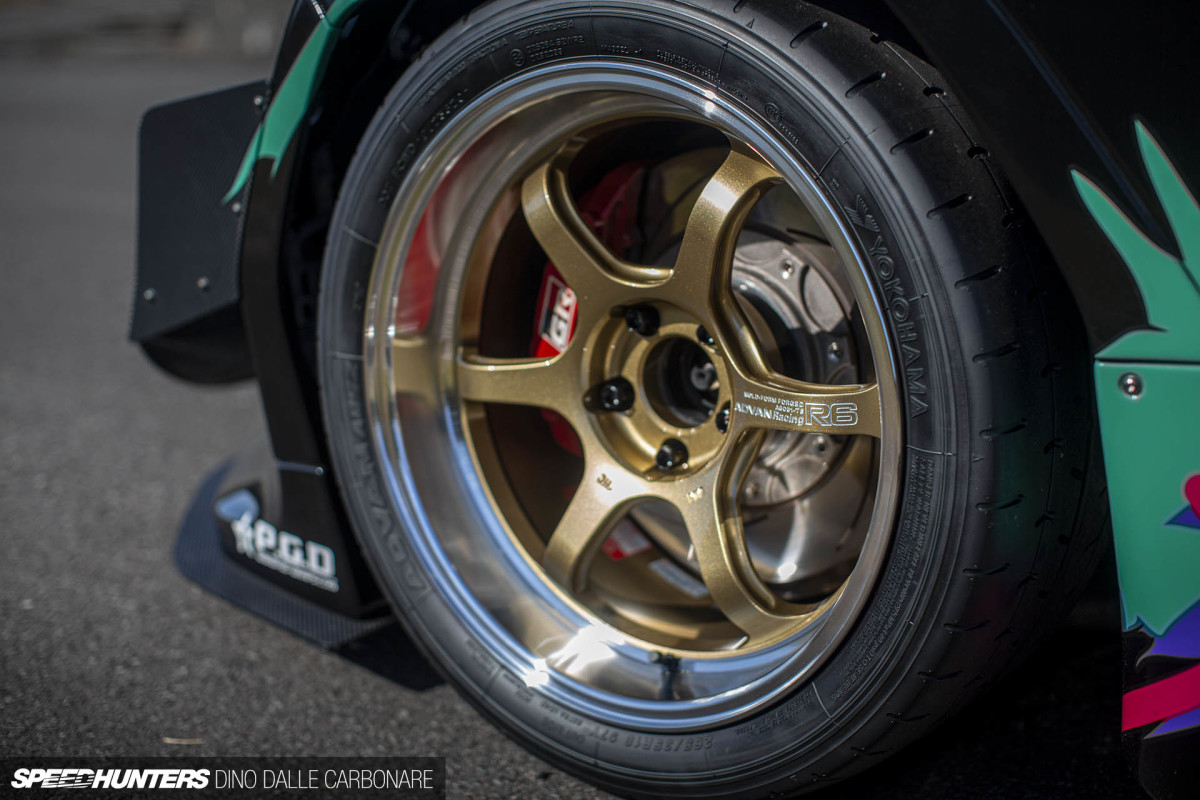
To fill its beefed-up arches, the HKS GR Yaris runs what we used to refer to back in the day as ‘GT-R size’ wheels and tires. That’s 18×9.5-inch wheels – in this case Yokohama Advan Racing R6s – shod in Yokohama Advan A052 high-grip radials. It’s pretty crazy to think about a Yaris running such a large combo, but they definitely don’t look too big for the car.
Suspension is enhanced by prototype HKS coilovers, and the car runs custom front and rear arms to extend the hub position and take advantage of the increased body width.
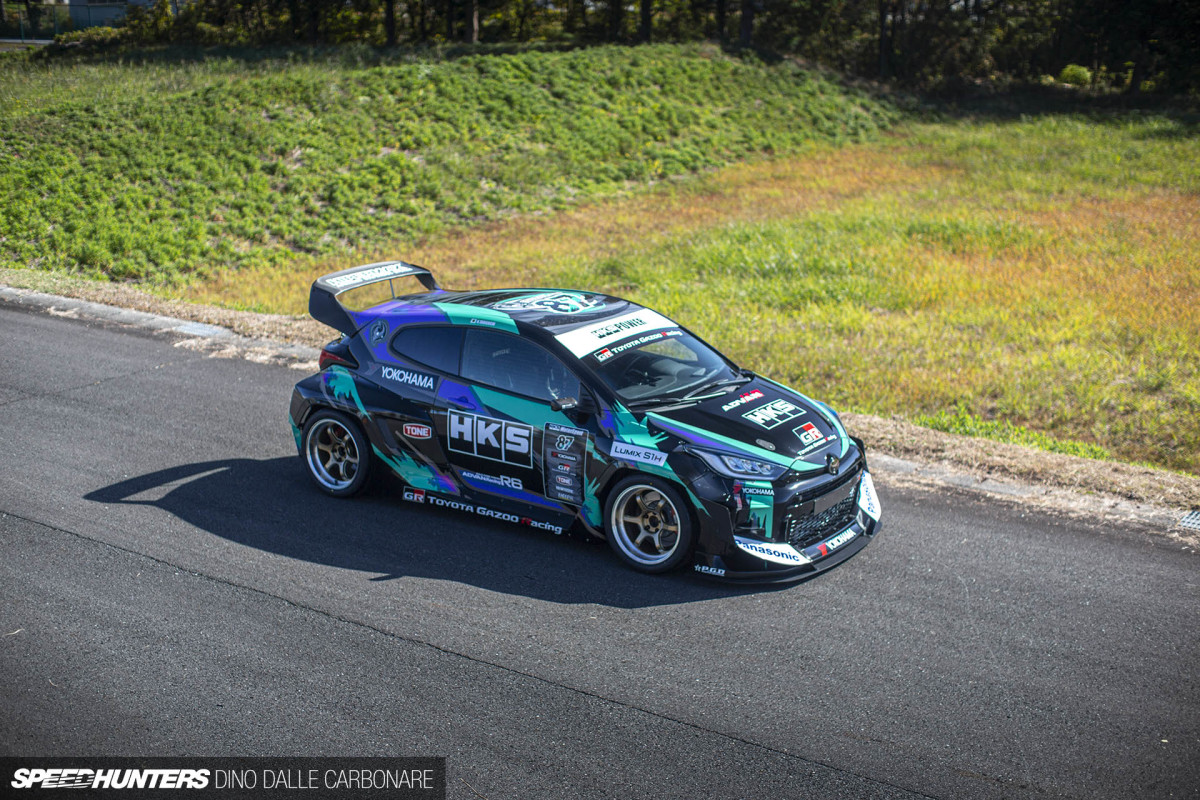
That aggressive stance is further highlighted by the iconic HKS oil-splash graphics, which are an instant visual cue that this is a car built to perform.
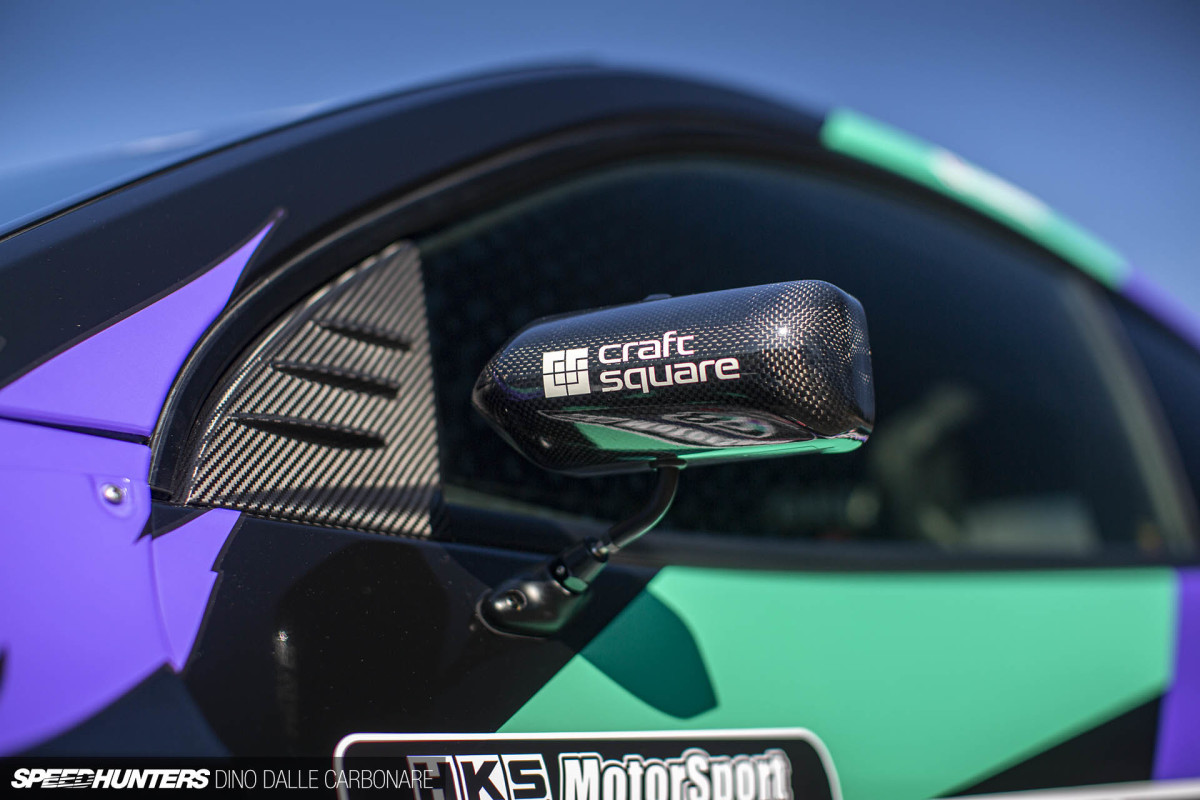
Of course, no proper JDM demo car would be complete without a pair of Craft Square carbon fiber mirrors. These simple but effective items have become an industry standard.
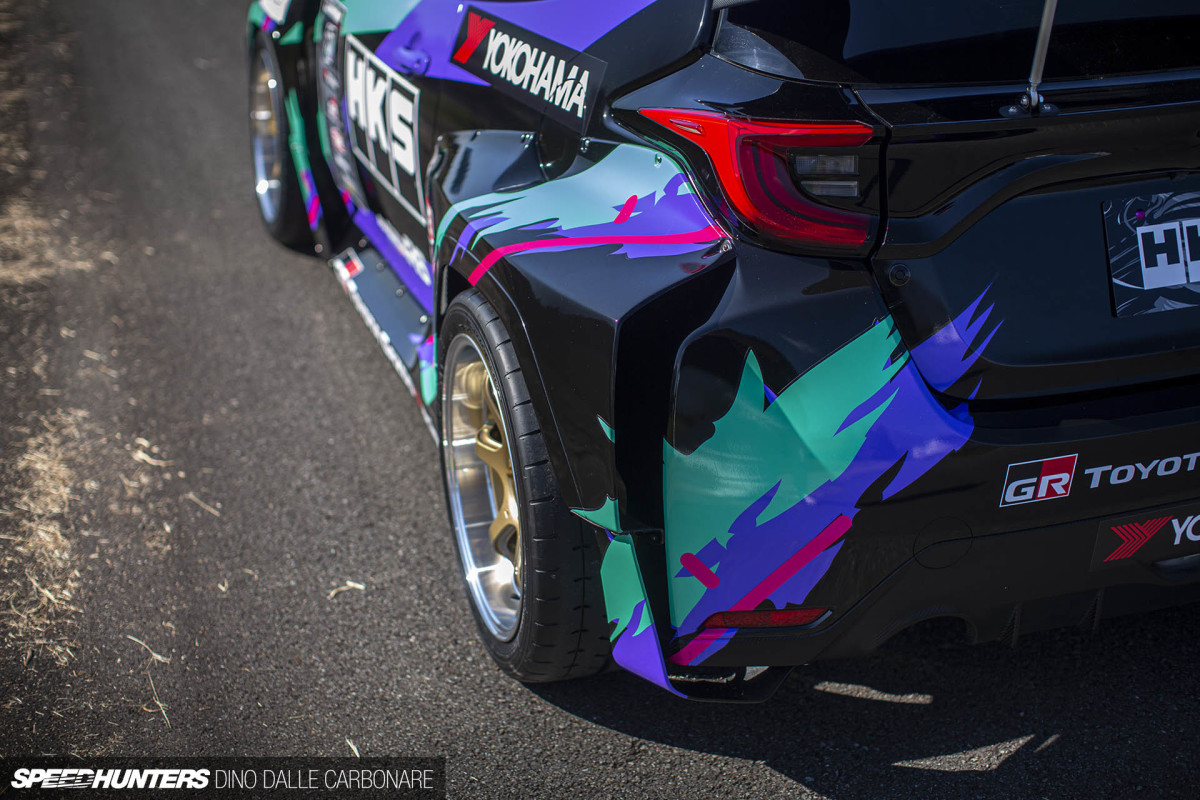
I personally think the Pandem kit looks its best from the rear, as the gap it leaves along the original body lines gives it serious character. I took a closer look but there’s nothing functional happening with the air – it’s purely aesthetic – but I’m sure we kind of all knew that already.
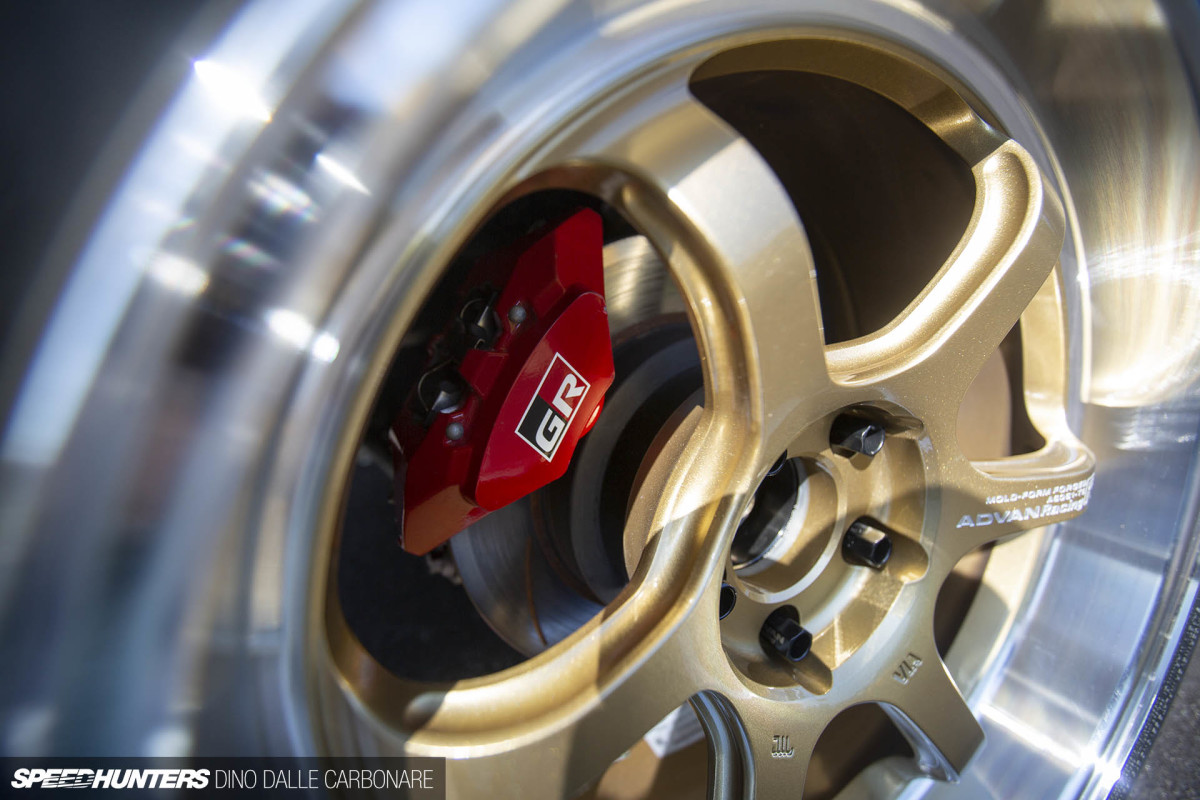
This car runs the red GR brake kit, which comes on the RZ model when it’s fitted with the optional ‘High Performance’ package (which also adds cool things like the front and rear Torsen diffs and an intercooler water sprayer).
The beefy 4-pot front and 2-pot rear monoblock calipers are yet another reminder of the extent Gazoo Racing has gone with this car. This is a far better and higher-spec braking system than what the GR Supra gets; something to think about there…
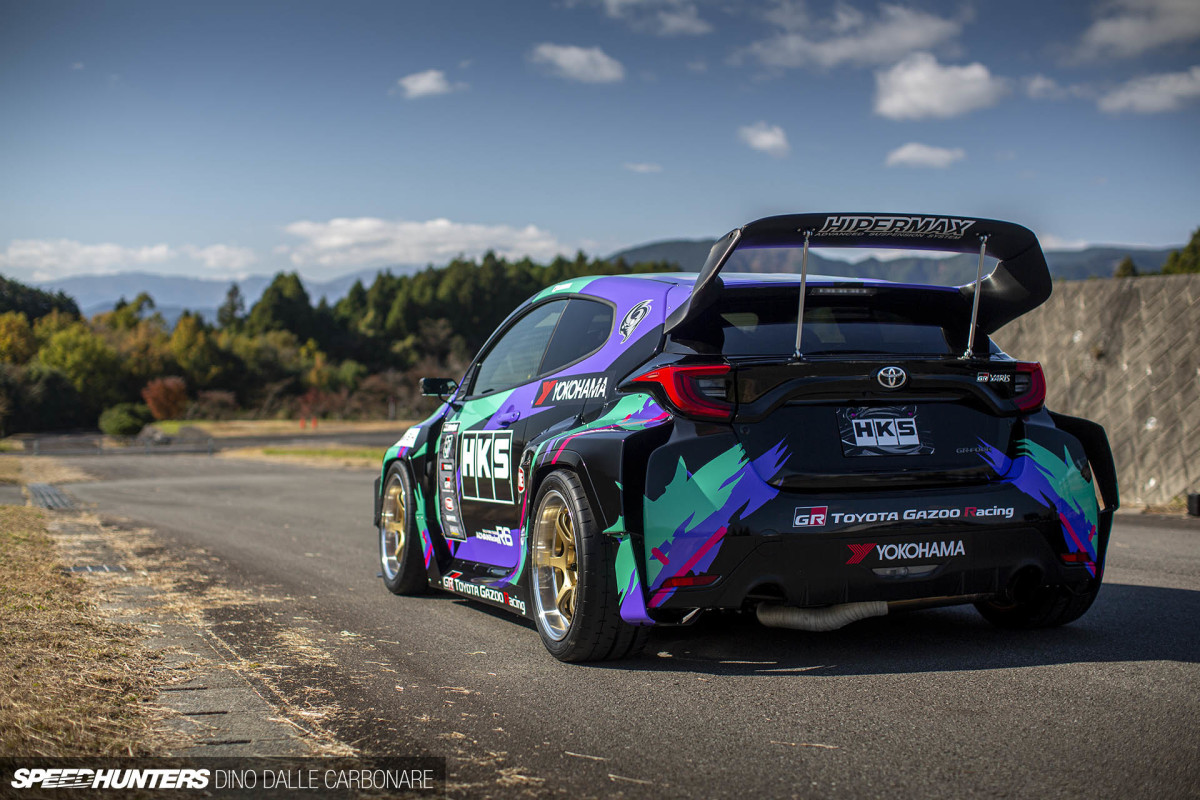
Any rally-inspired aero package needs a serious hatch/roof spoiler, and there’s definitely no missing this one. Two metal rods help support the wing, but again I think they’re more of a visual addition than anything else.
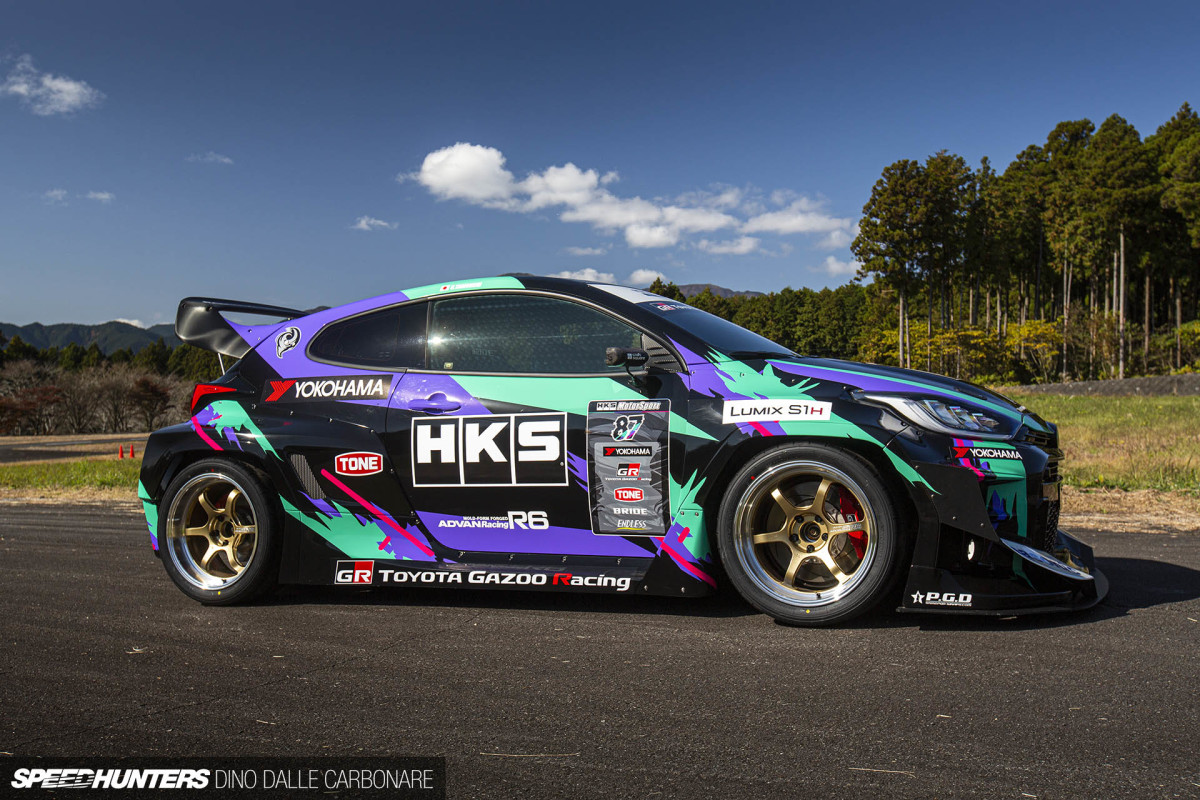
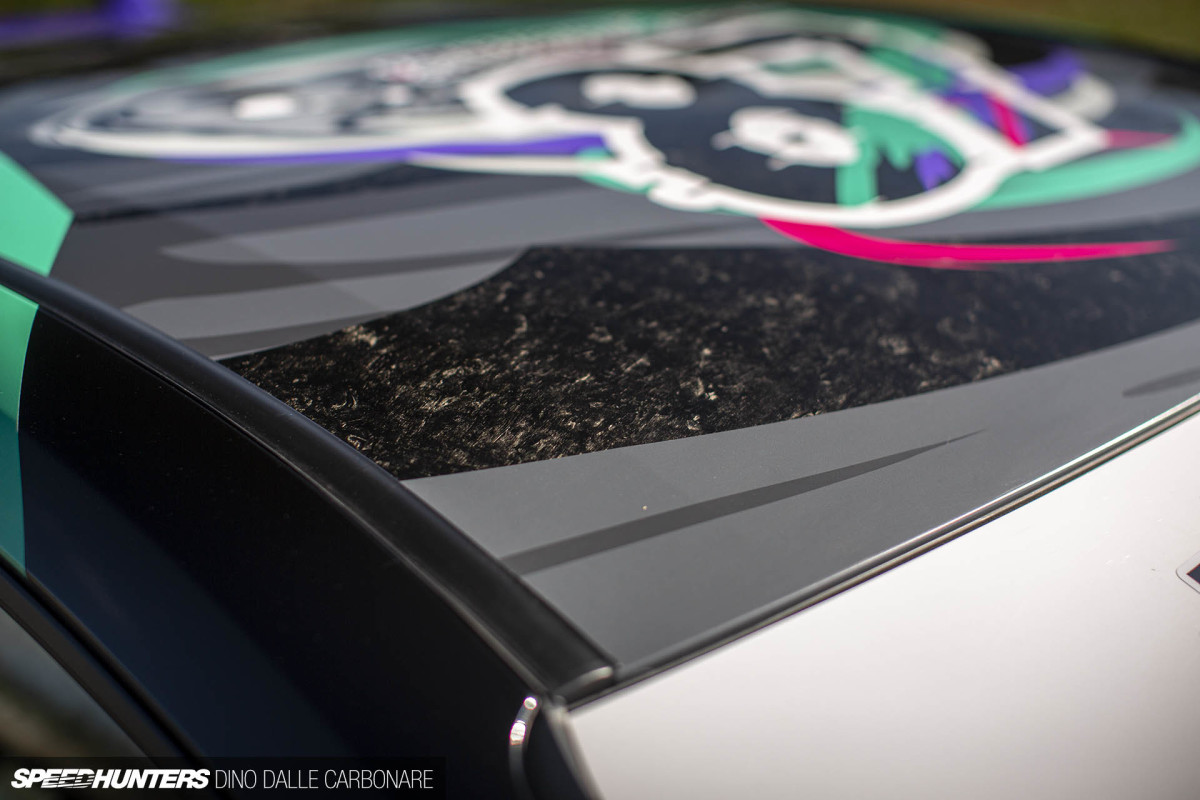
This HKS build has presence for days, but one aspect left me happy but confused. As I mentioned in my previous GR Yaris drive feature, Gazoo Racing developed a carbon fiber roof panel to help lower the Yaris’s center of gravity, only to finish it off with a carbon-look vinyl. Peel it away and you get what you see above.
Seriously, why would you ever want to cover that up? Toyota, please explain…
CHAPTER TWO
The Engine Room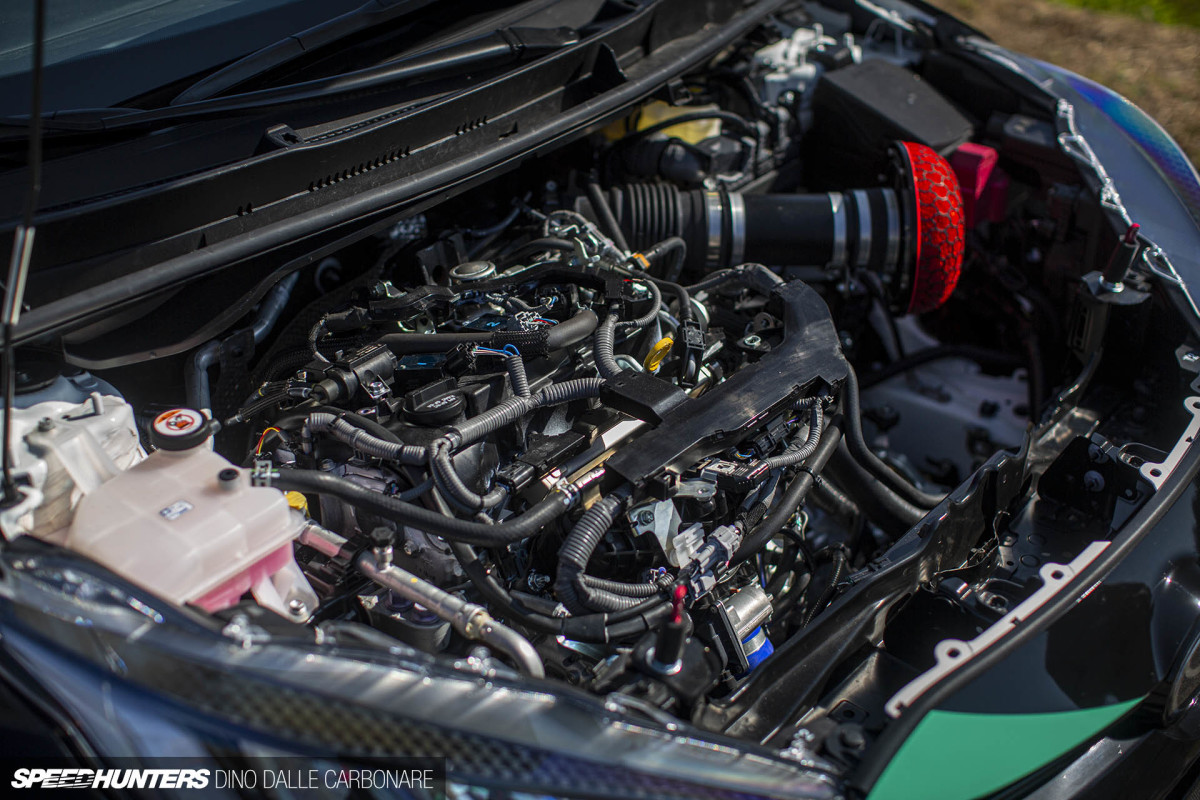
I’m sorry to have to reveal this to you, but the G16E without its plastic engine cover looks like the back of a washing machine. While modern performance engines have become as efficient as they are potent, they’ve become extremely complicated. Read: they are not pretty, and with the GR Yaris it’s hard to even see the engine itself.
Under the hood, HKS have done very little to the motor for this first stage of modifications, but that doesn’t mean it’s not making more power. Quite the contrary.
HKS started by playing with the ECU settings, refining the tune as they added modifications. The idea has been to push the stock G16E as far it can go, and so far that’s entailed adding a prototype bolt-on turbo and raising boost from the factory 1.4bar (20.6psi) all the way up to 2.7bar (39.7psi). To support this, a prototype intercooler was made up, along with a modified intercooler spray system and a hard pipe kit. The stock air box was also ditched in favor of an HKS Super Power Flow filter. The result of all this is 375hp – a solid 100hp gain over stock.
But HKS didn’t stop there. An additional 100hp was gained through a 100-shot of nitrous oxide, for a total of 475hp. That’s enough juice for Taniguchi to effortlessly four-wheel drift the car around in recent tests.
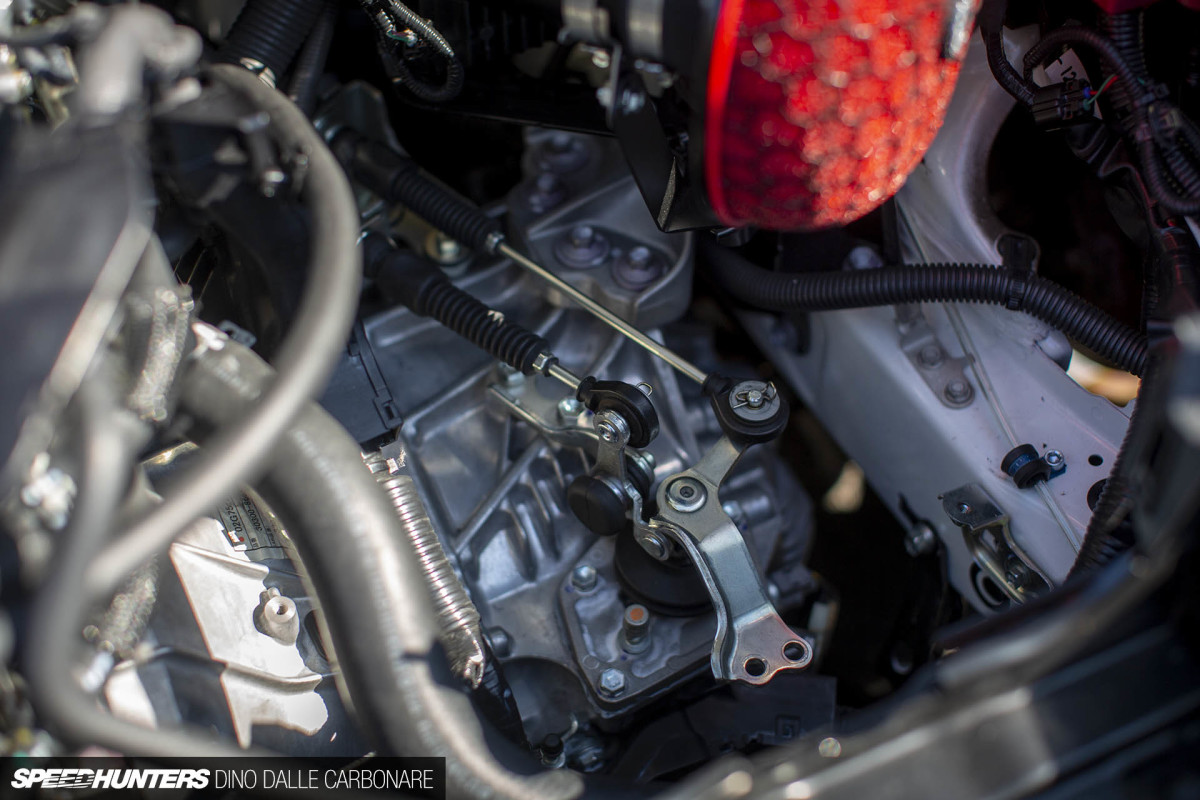
The most impressive thing is that with an extra 200hp in play, both the engine and 6-speed manual driveline are still working perfectly. Toyota has a reputation for over-engineering their performance products, and the GR Yaris seems to be no exception to the rule.
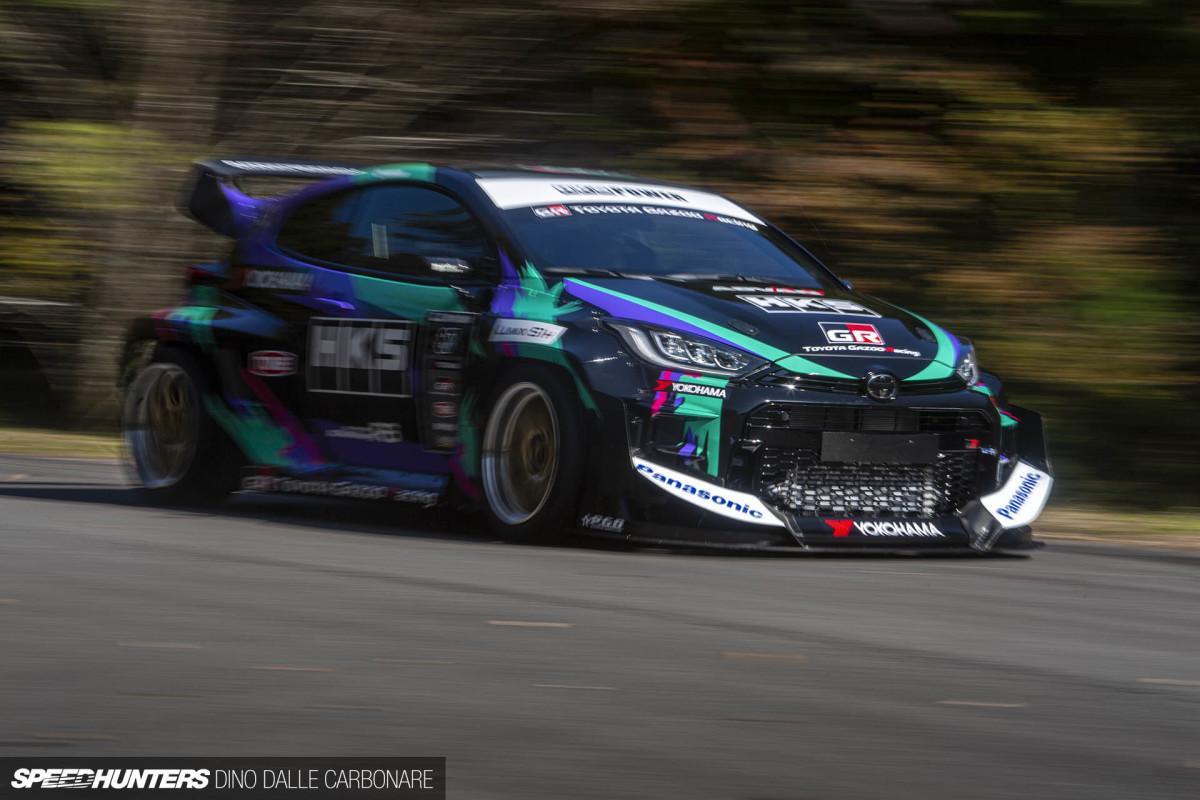
With its custom open exhaust, the engine sounds pretty aggressive with a WRC-like overrun. Watching it dart around HKS’s inner test roads really was something else.
In the video above you can see Taniguchi having a lot of fun in the HKS GR Yaris during one of his first test drives of the car.
It also makes total sense why HKS seemed so excited to jump on the second phase of research and development for the G16E. If this thing is so tough in standard form, it will no doubt respond well to an additional and more substantial round of modifications. Could a 500hp+ GR Yaris be the tuner norm in a few years? That would be pretty crazy!
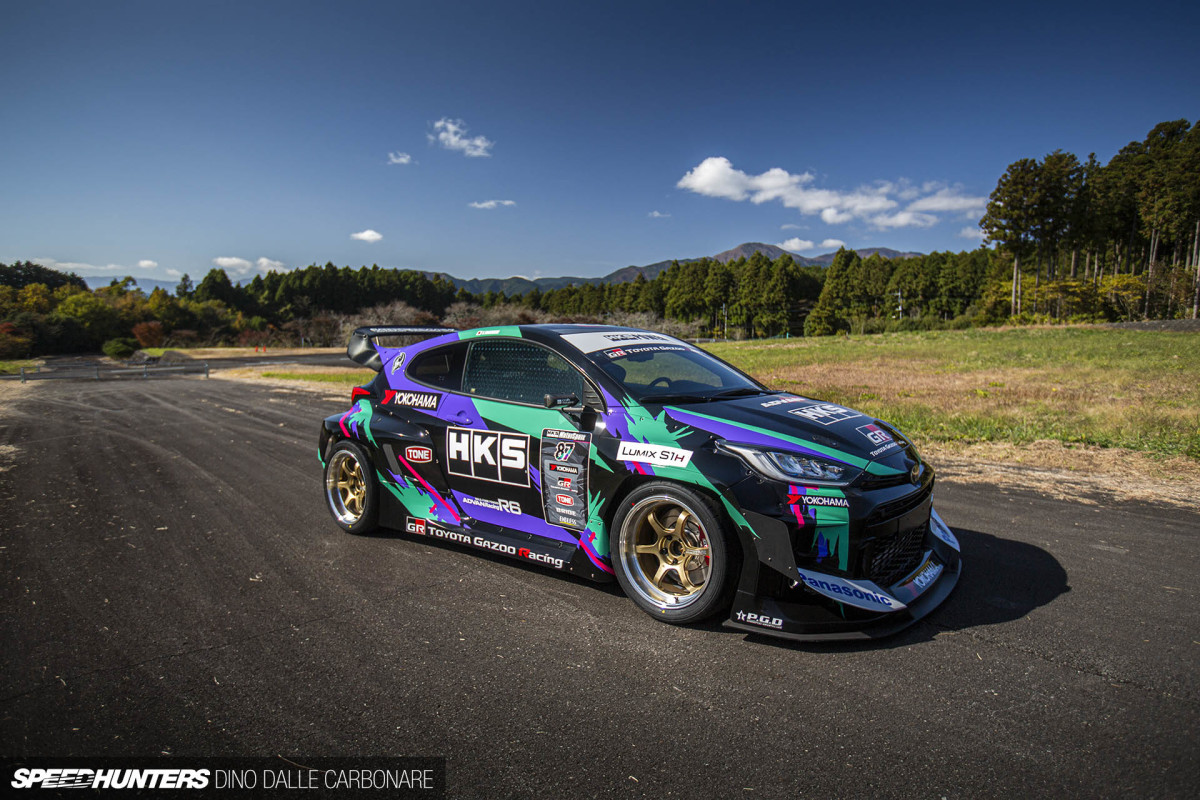
The GR Yaris is such a good addition to the Gazoo Racing line-up, in which the A90 Supra also fits with its ripe-for-tuning BMW B58 powerplant. It’s news like this that puts a big smile on my face, as I’m always fearful that we are on our last few legs of combustion engine tuning.
FINAL CHAPTER
The Inside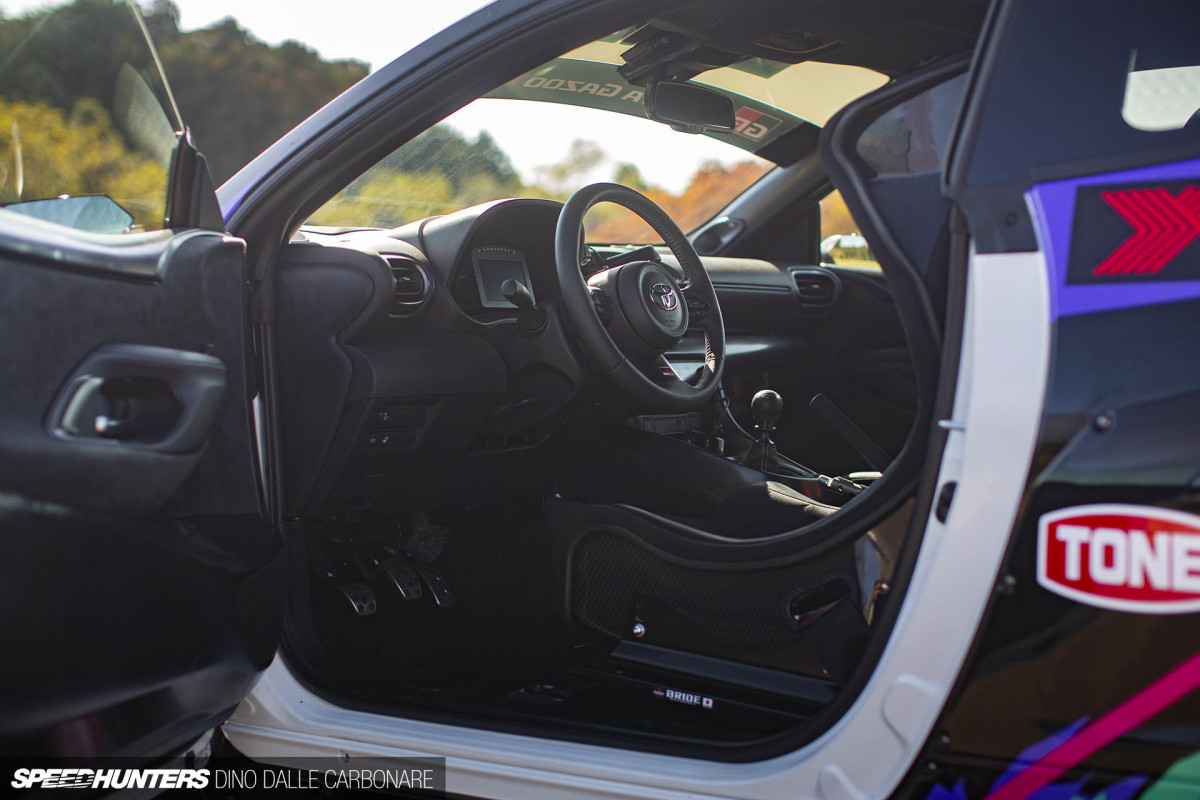
As soon as you open the driver’s side door, it’s obvious that this a pre-production car; the trim pieces use experimental plastics and finishes and there are many bits and pieces missing. Not to worry though, as HKS plans to completely gut the car as the tuning process evolves.
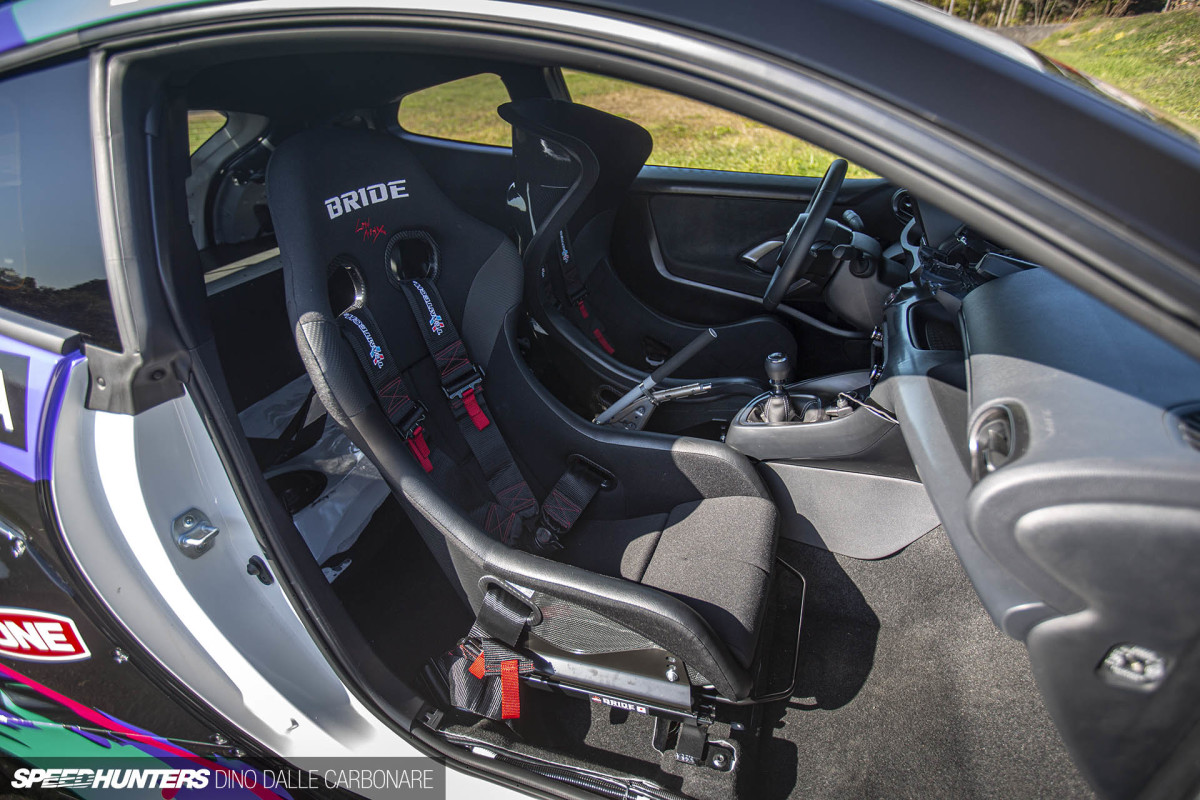
Surprisingly enough, the stock steering wheel has been retained, although this is soon to be swapped out for a race item, potentially one of Taniguchi’s signature Nardi wheels. The stock “90s dash” as it was referred to in the comment section of the GR Yaris feature (a reference that made me laugh), has been replaced by a MoTeC C125 color display/data logger to provide all of the realtime data you’d ever need from the ECU.
HKS once again collaborated with Bride on this project and the car benefits from some of their lightest carbon fiber seats, including a XERO RS for the driver’s side.
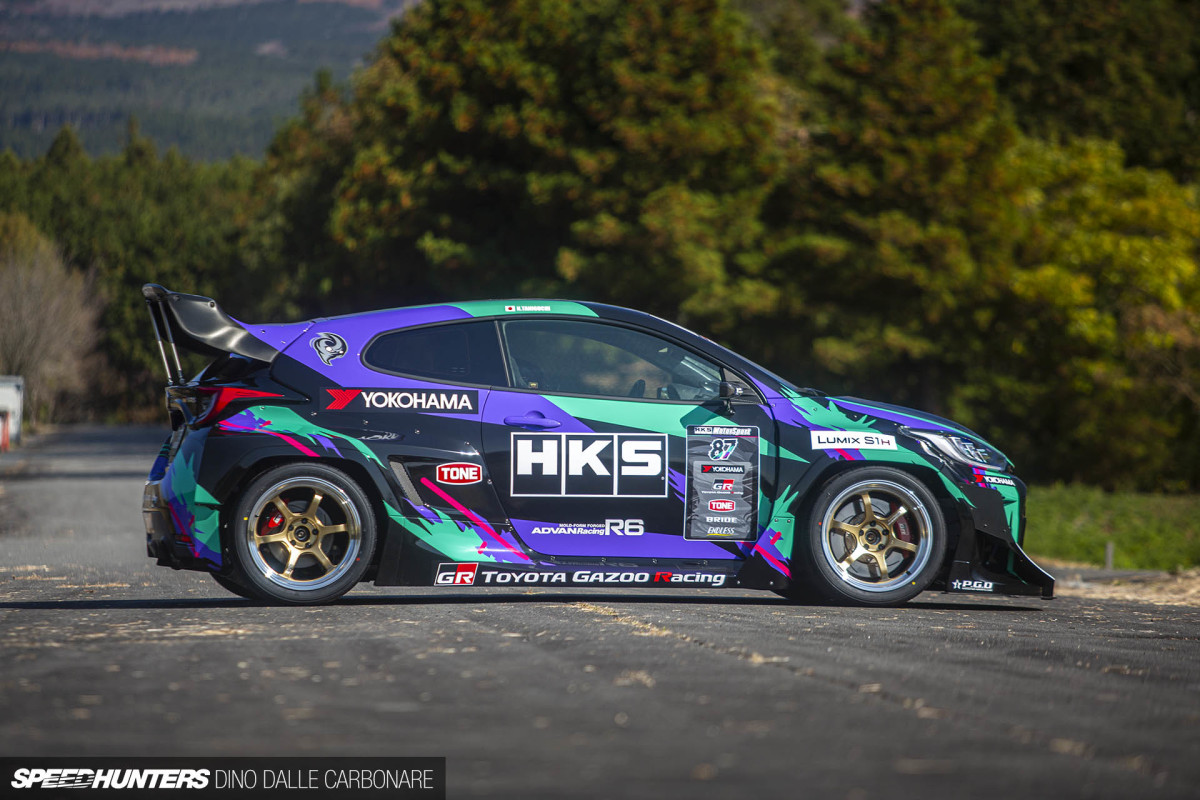
This car, along with Daigo Saito’s 2J-powered GR Yaris, certainly helps guys in my age demographic reignite a passion for hot hatches. Back in school I used to dream of owning a Peugeot 205 GTi or Golf GTI 16V, and once I had a chance to drive both of them, they became cemented in my mind as the benchmarks I continue to judge modern cars against.
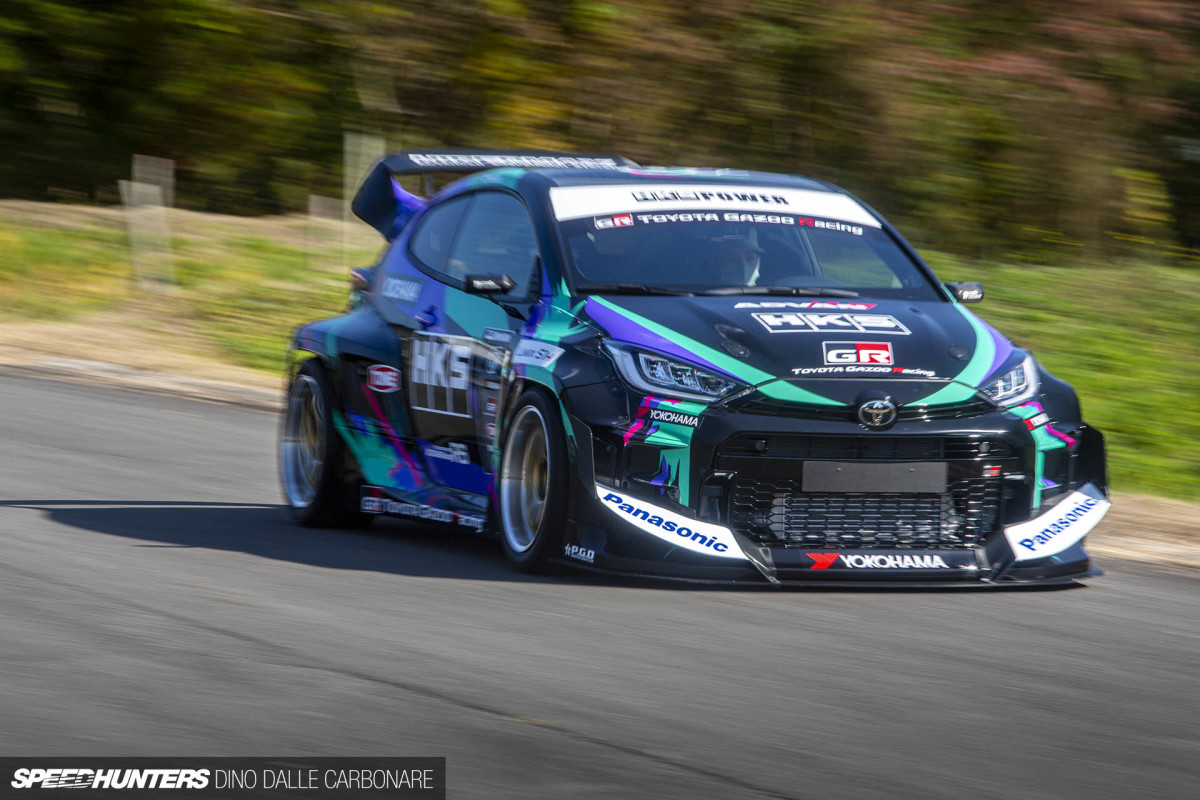
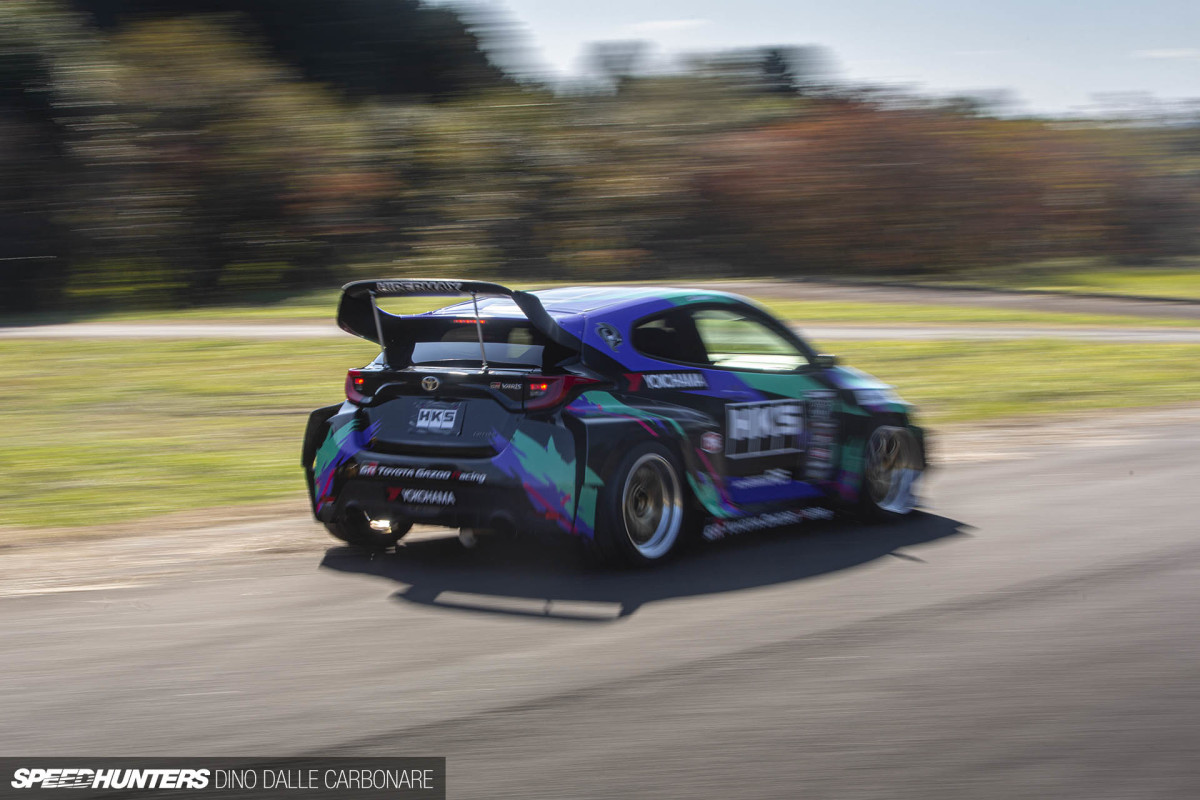
I again totally commend Toyota for allowing the GR Yaris to not only happen, but as HKS has proven, endowing it with a powertrain and driveline that us enthusiasts can play around with for the next decade to come. Now I’m just waiting to see how the tuning world embraces this car. I’m sure Tokyo Auto Salon 2021 will give us some great first examples of aero tuning, while HKS and other parts manufacturers figure out how to offer reliable power packages to their customers.
On a side note, Toyota, don’t disappoint all our car enthusiast friends over in the US. The GR Yaris is too good for it to be limited to a few select markets!
Dino Dalle Carbonare
Instagram: dino_dalle_carbonare
dino@speedhunters.com


